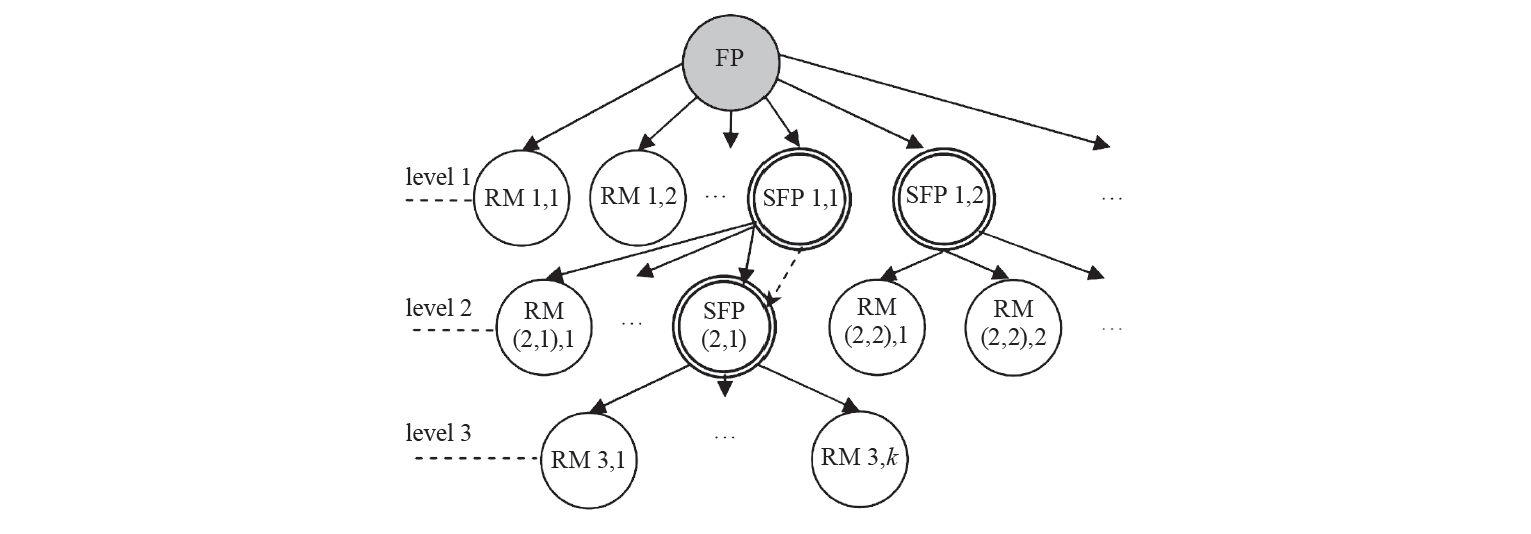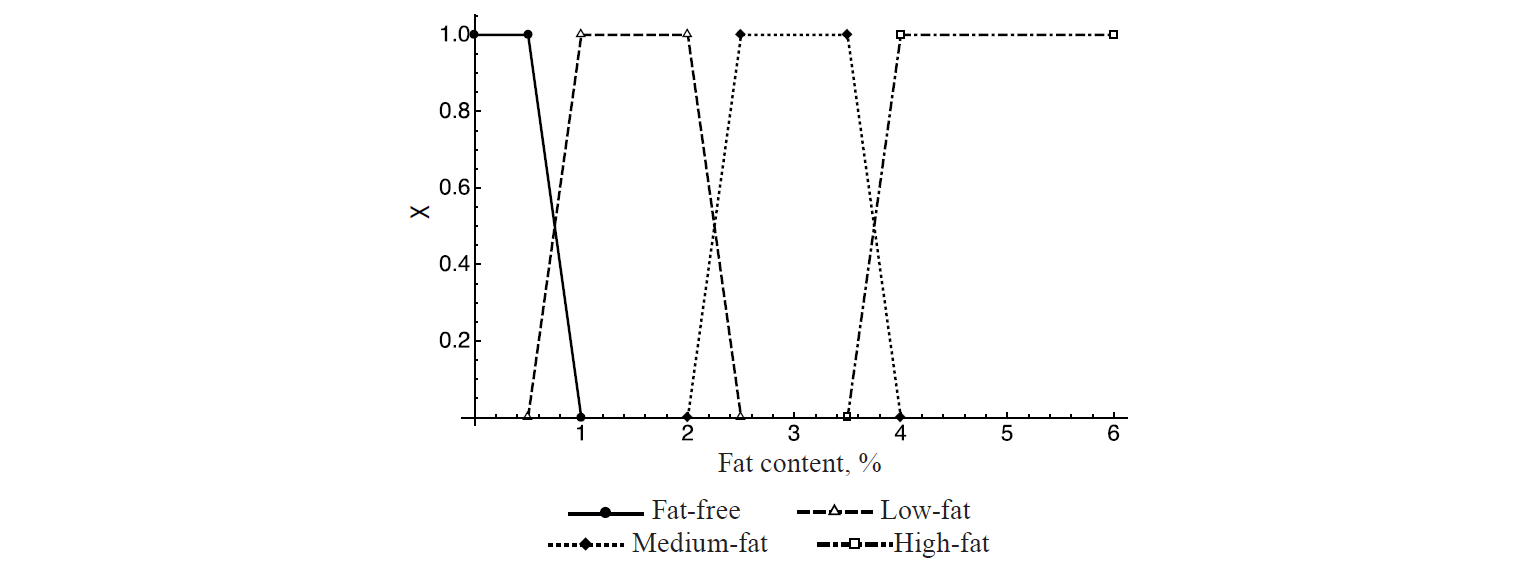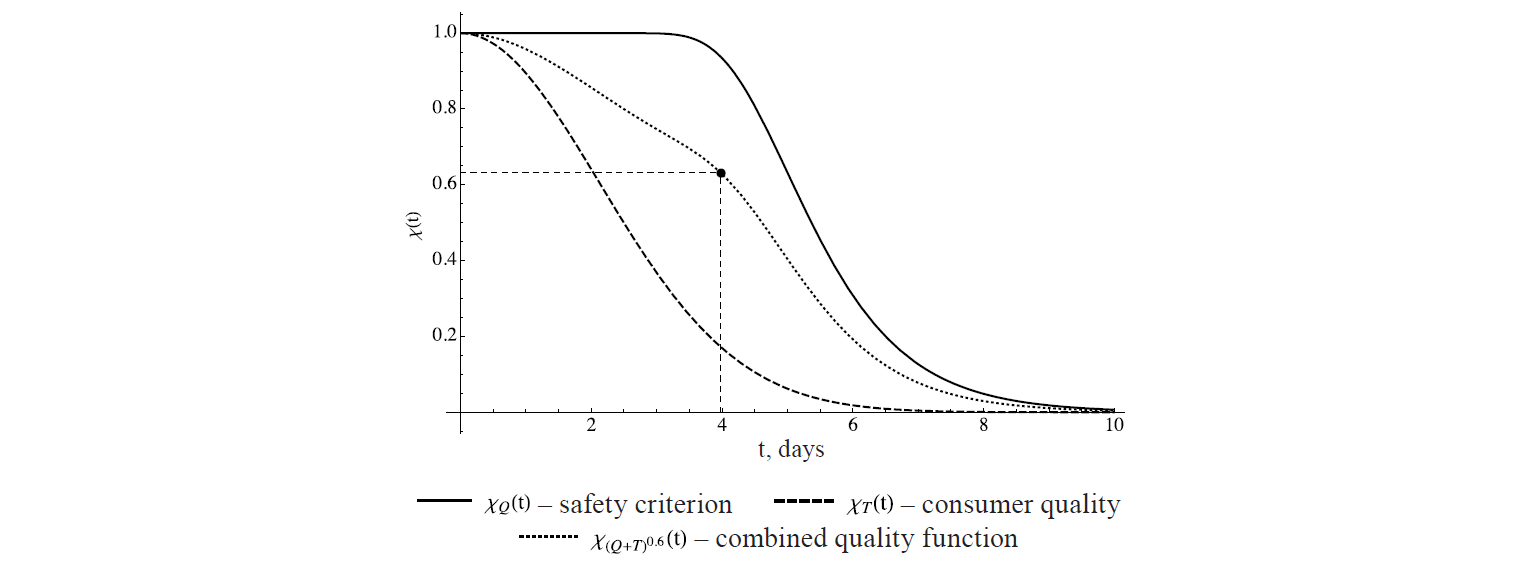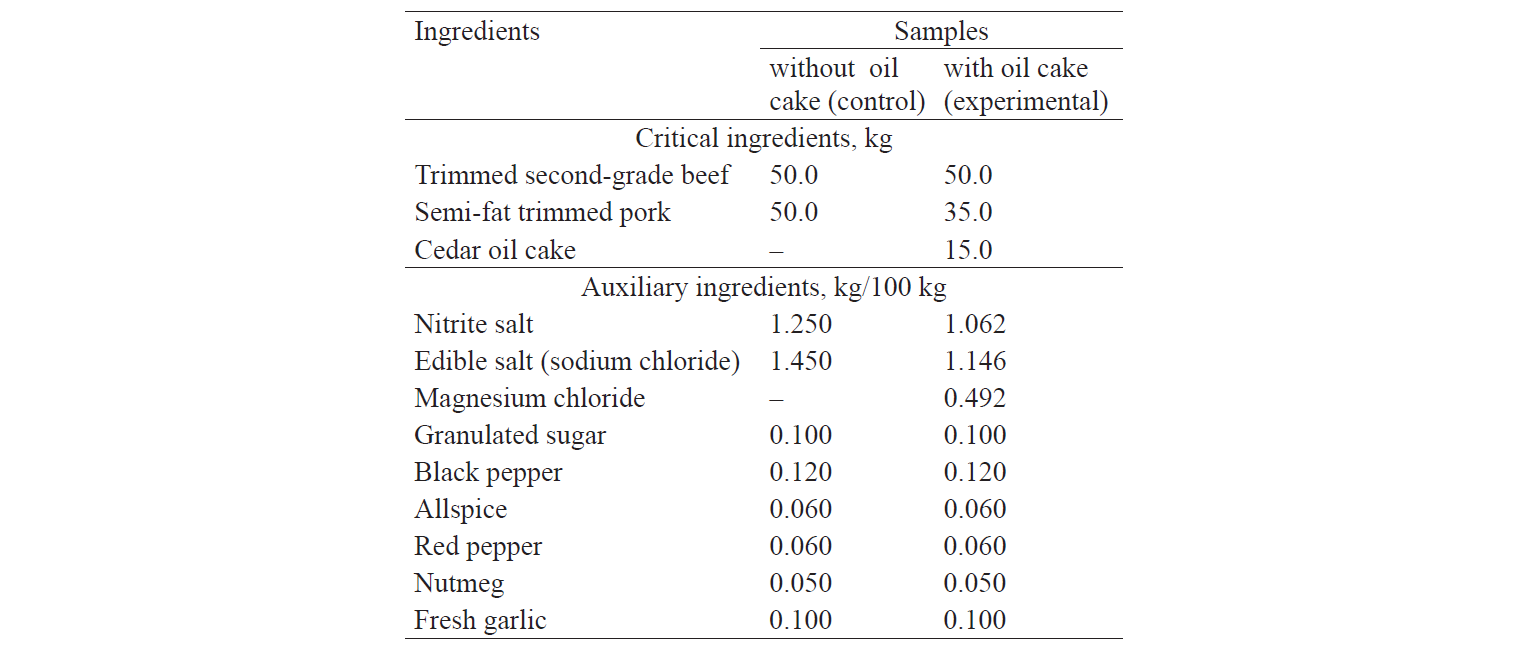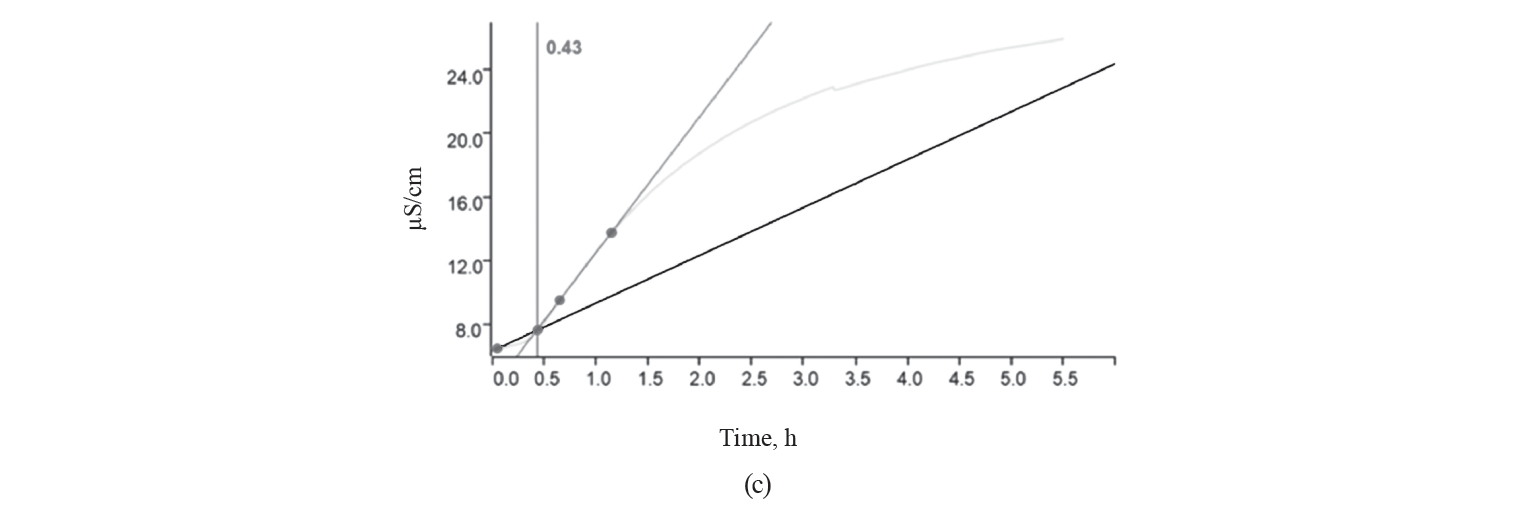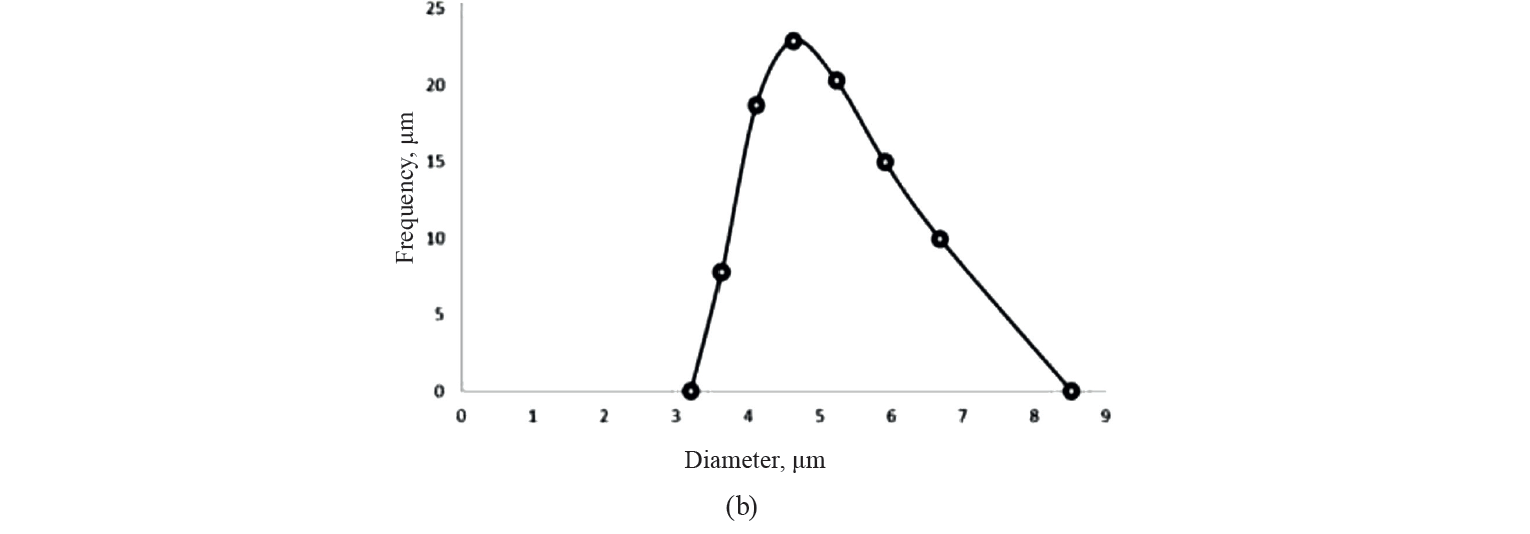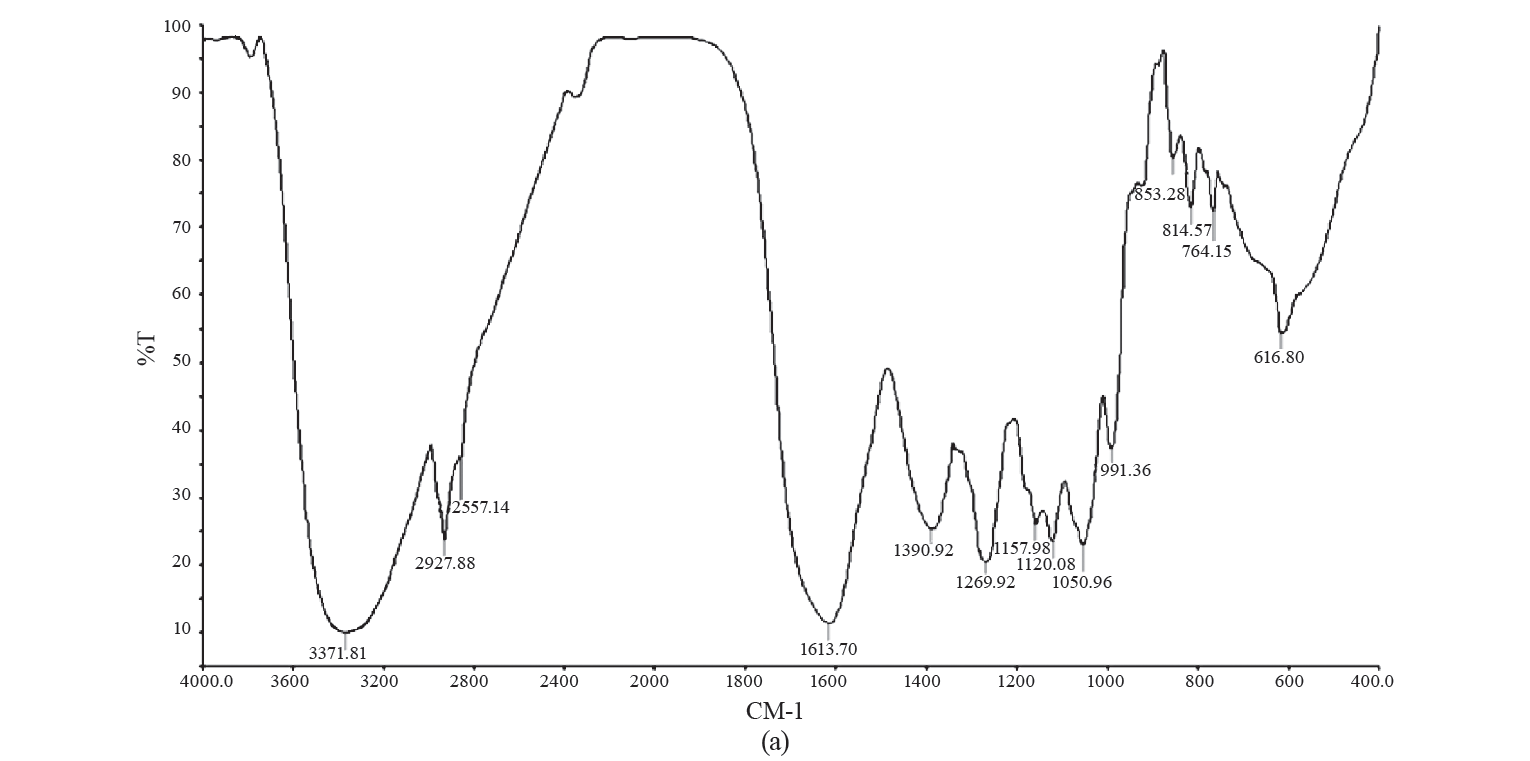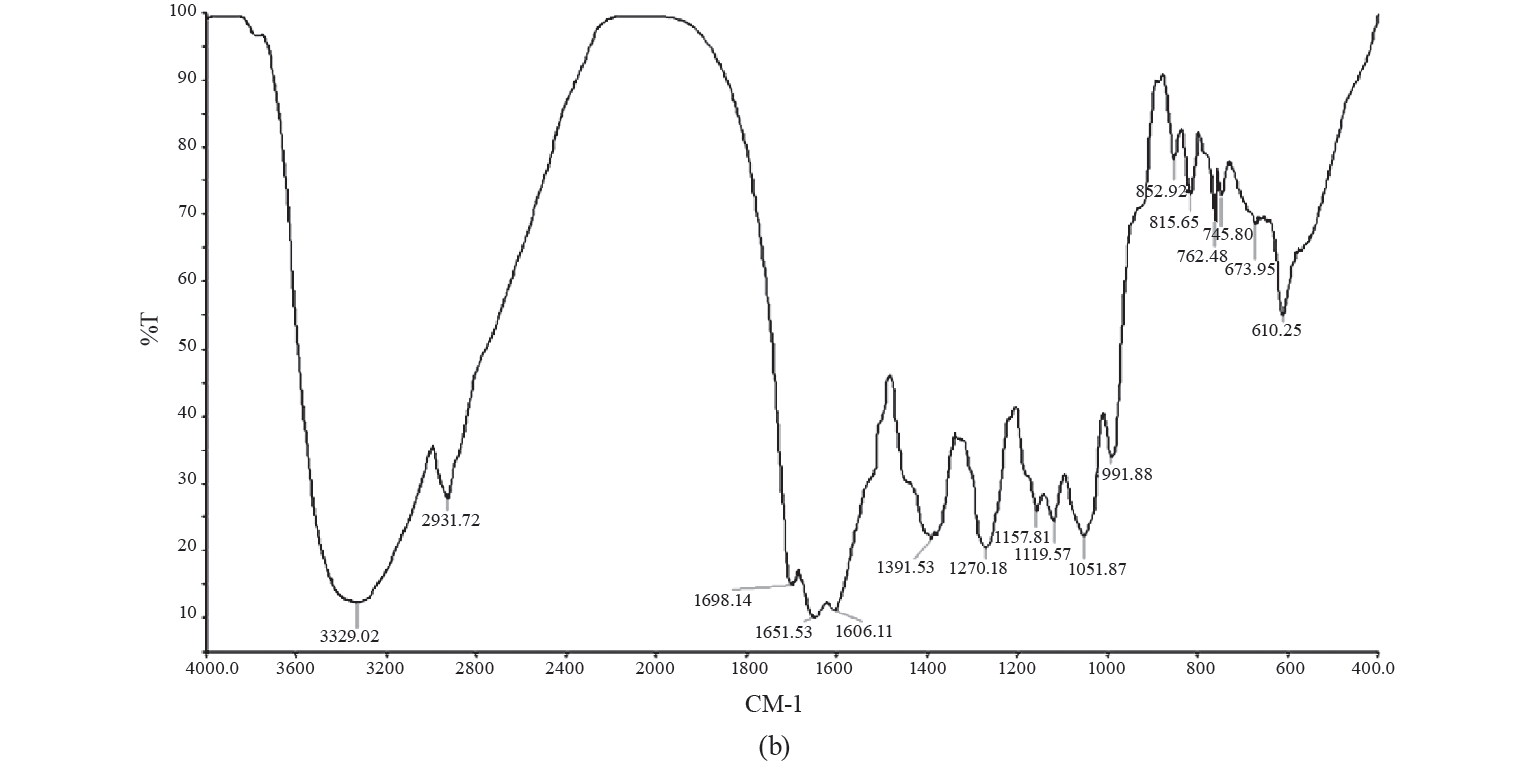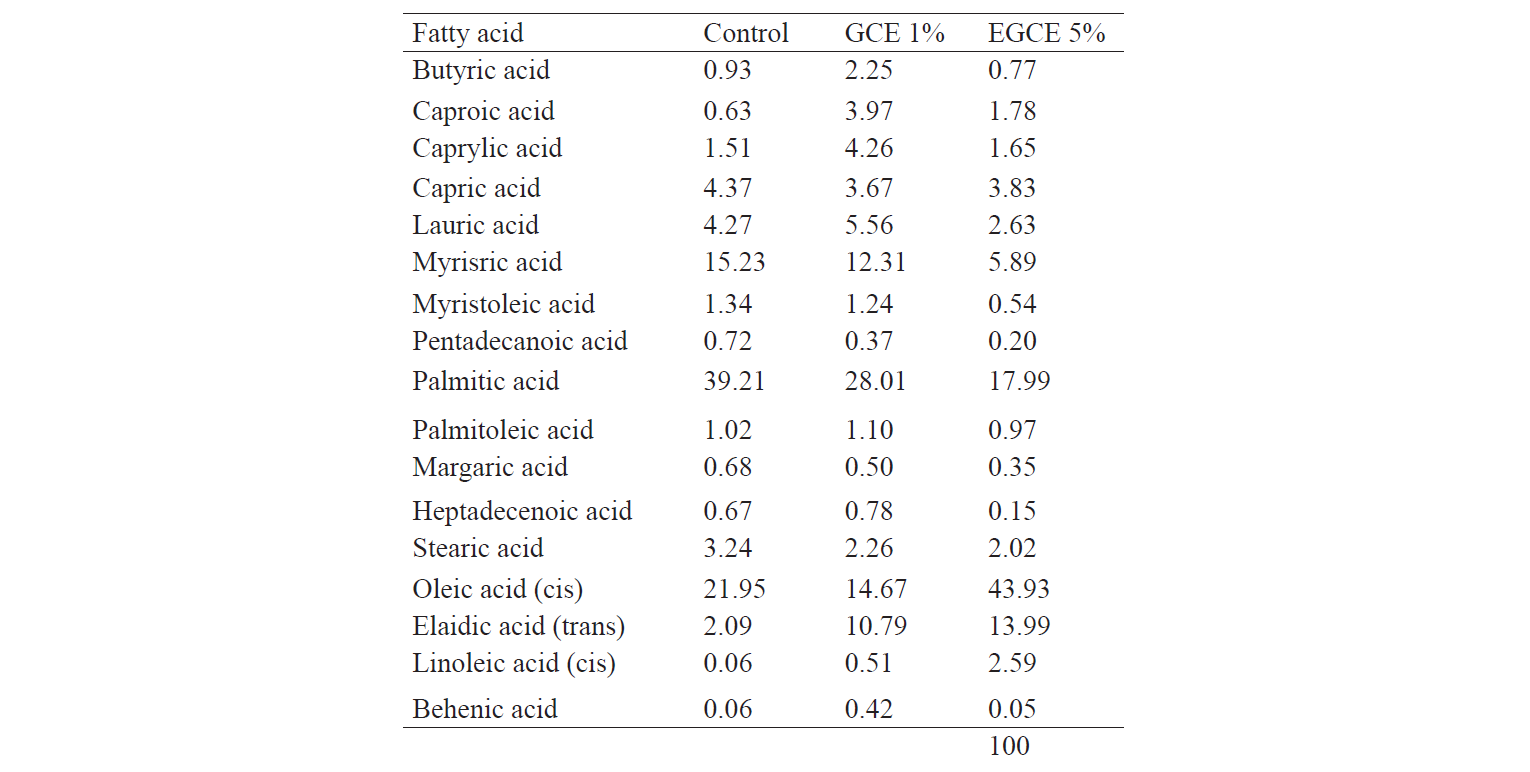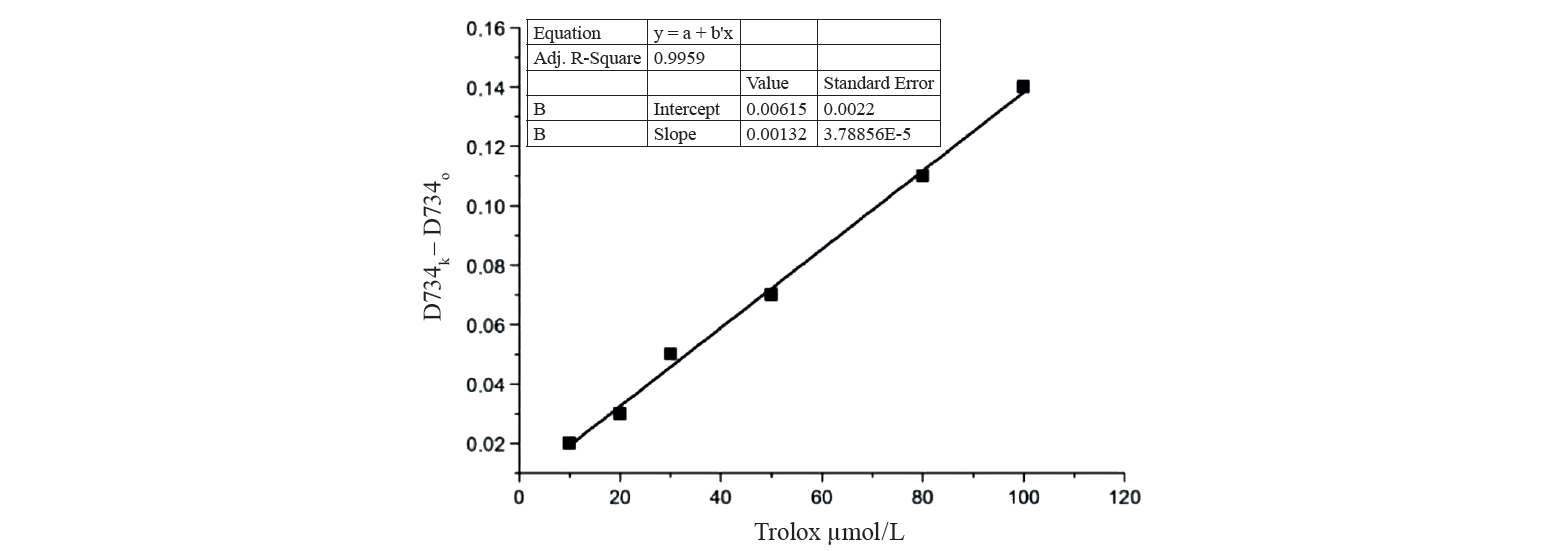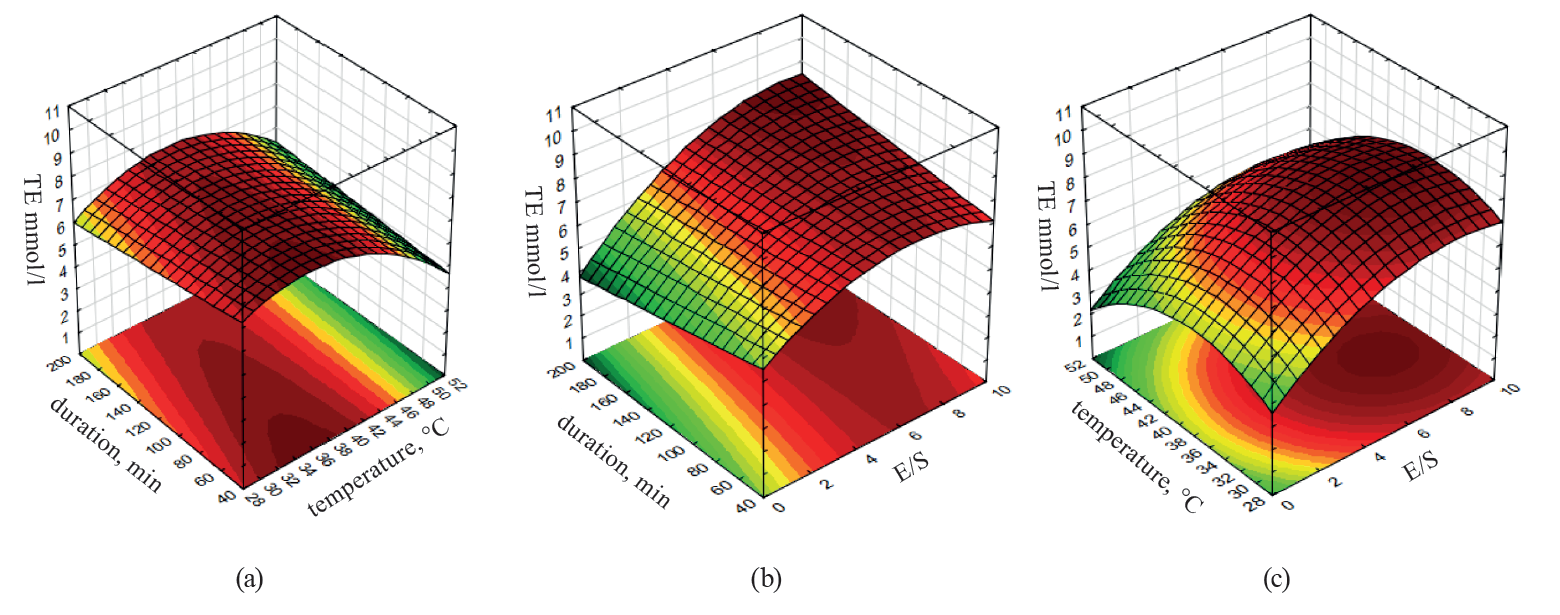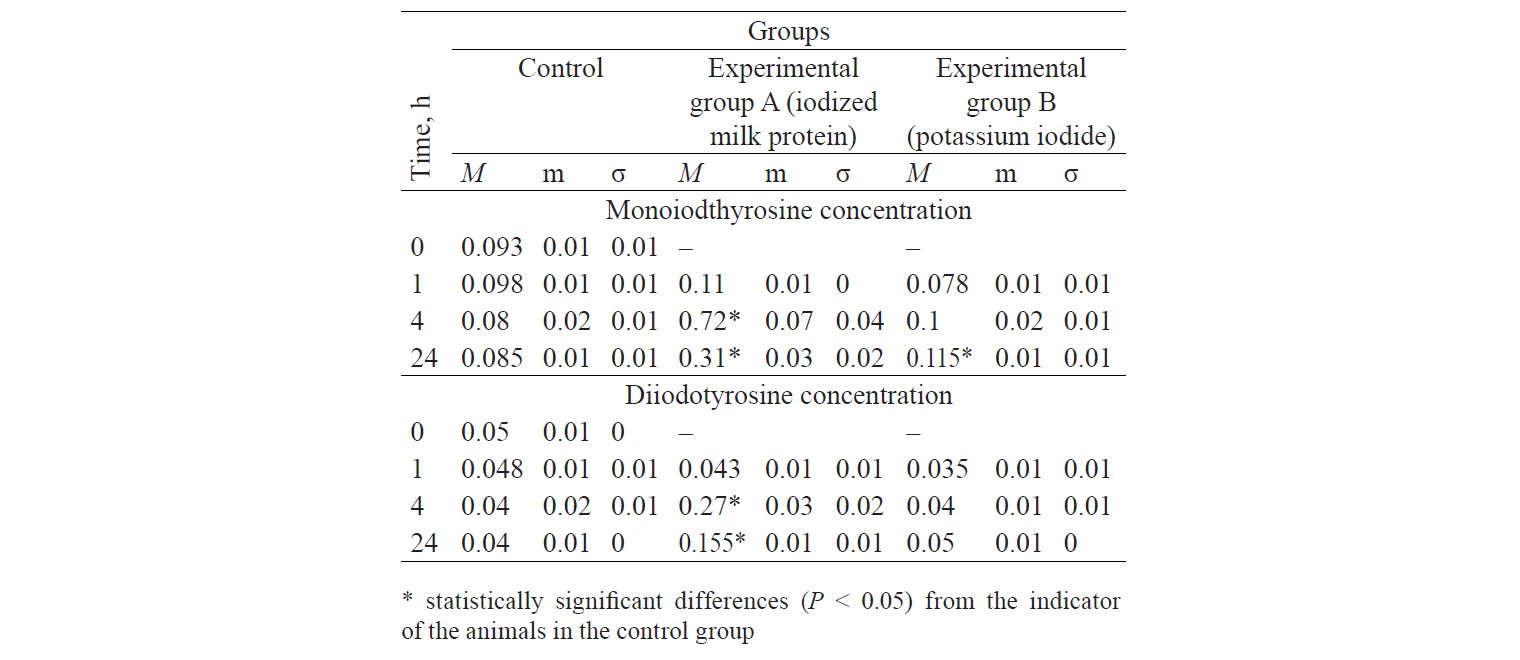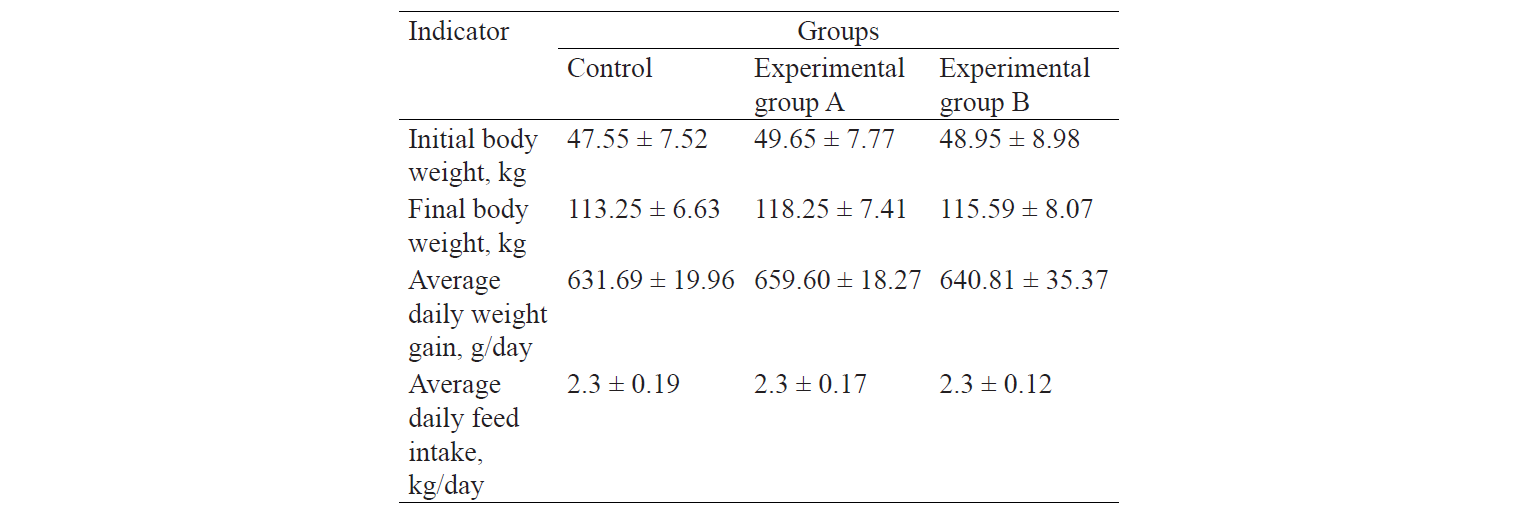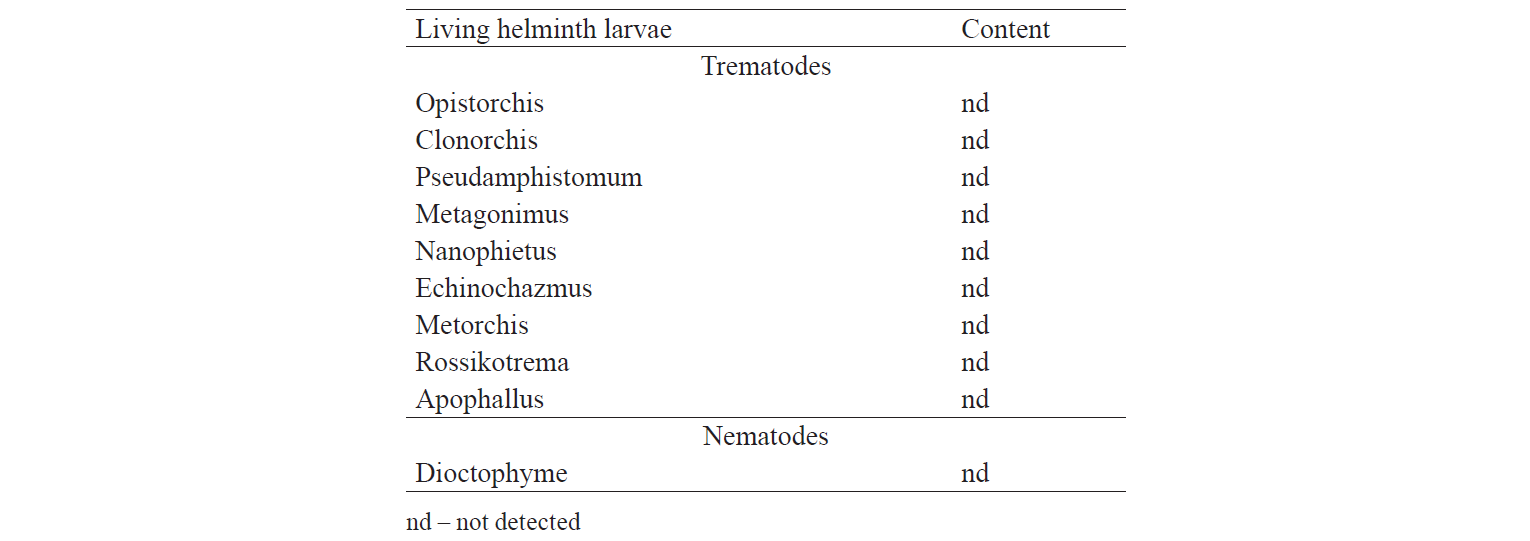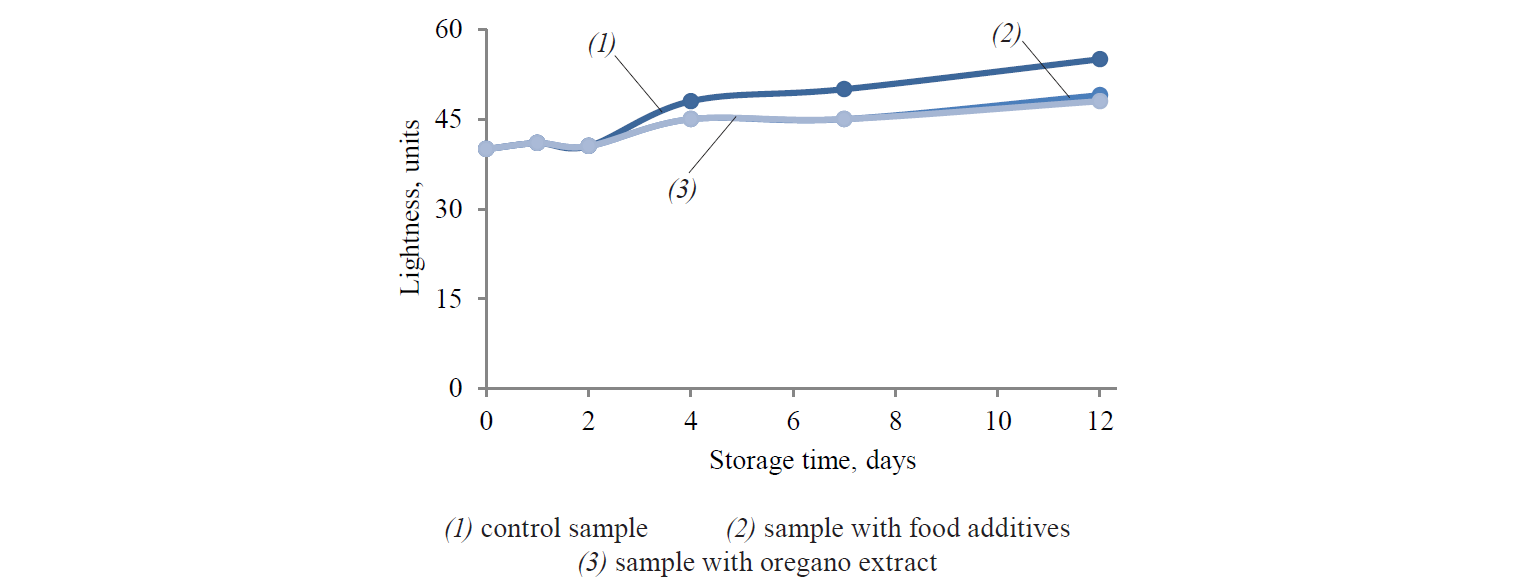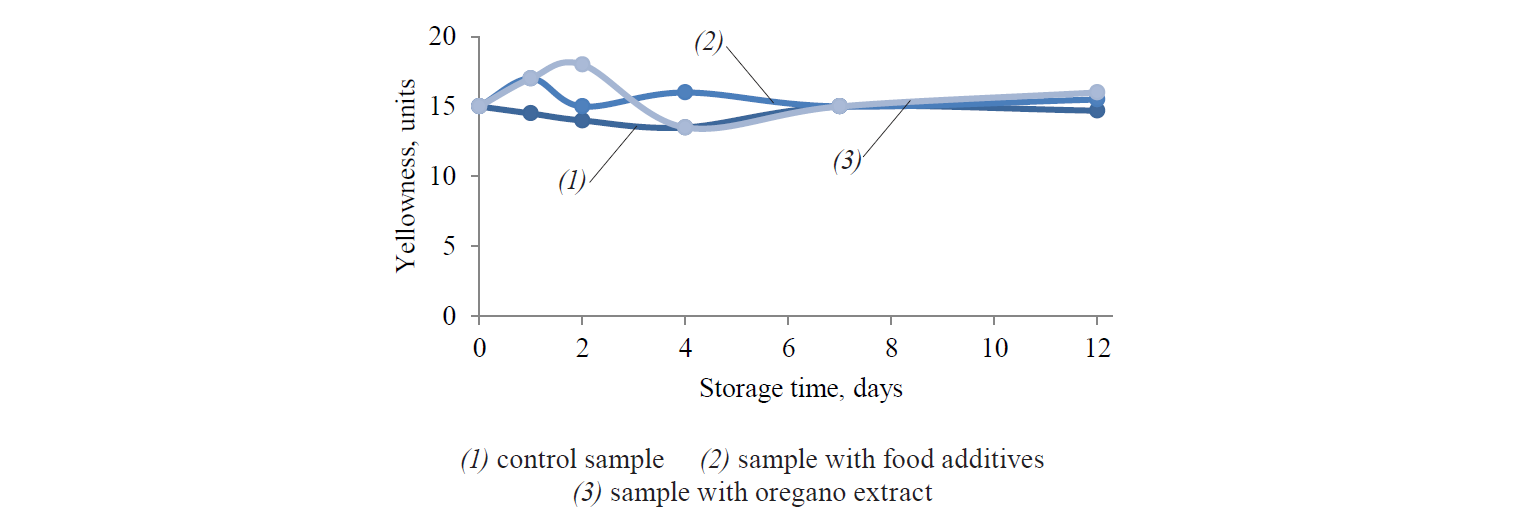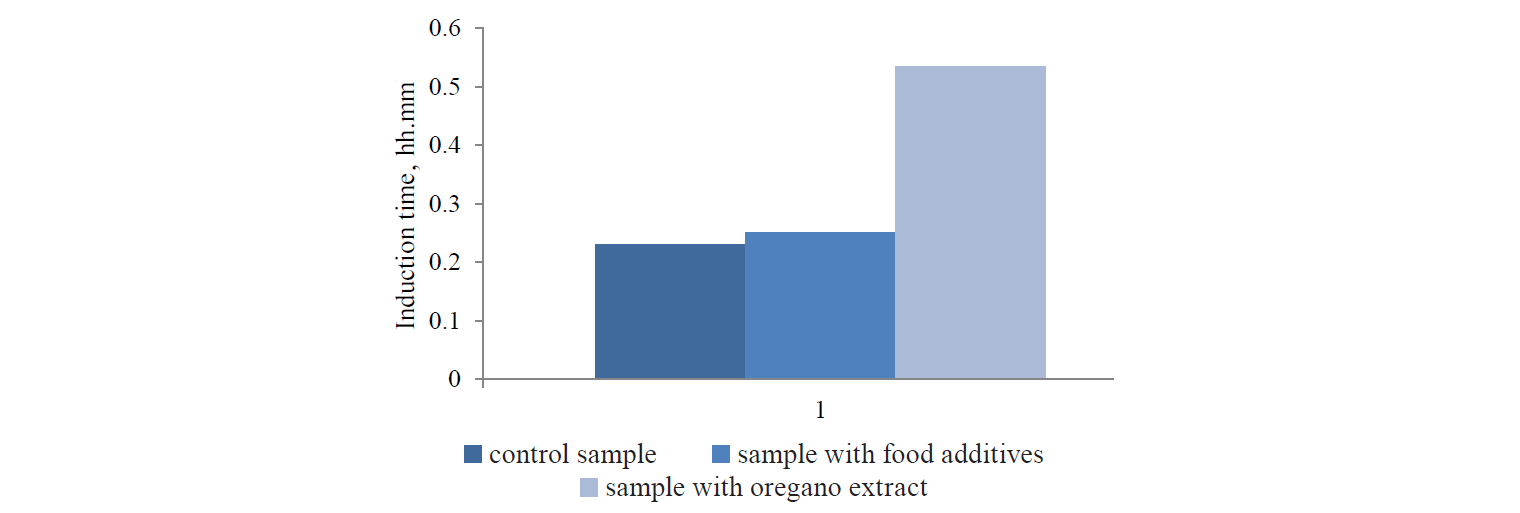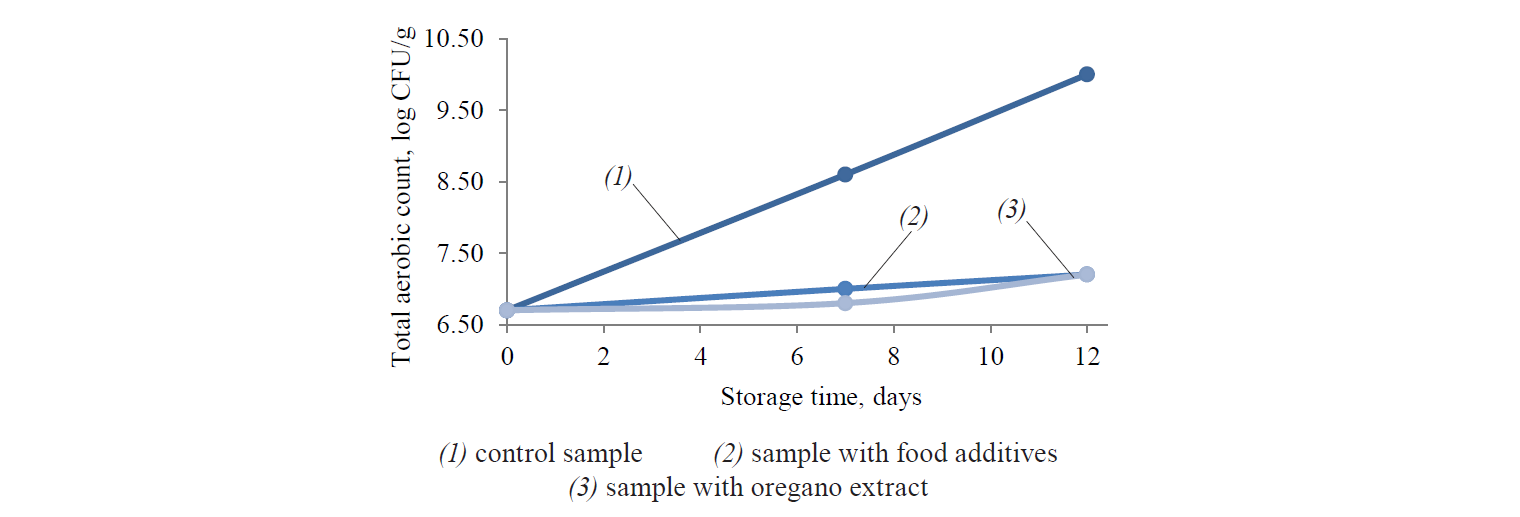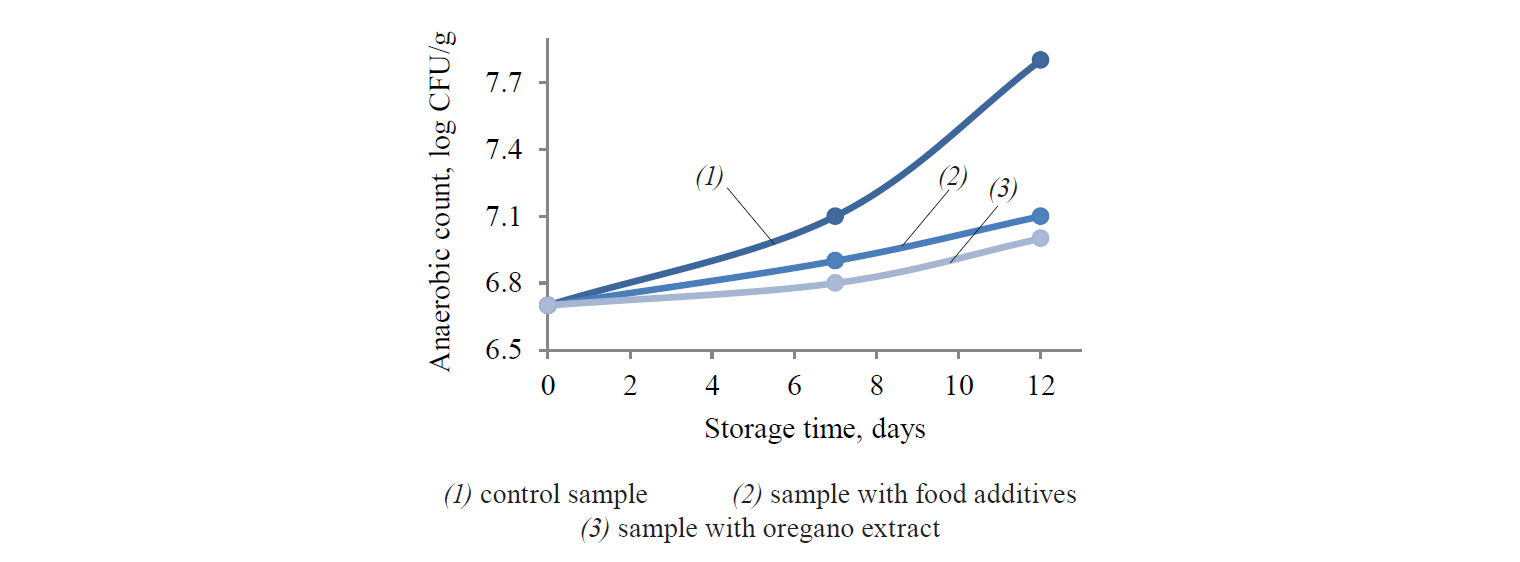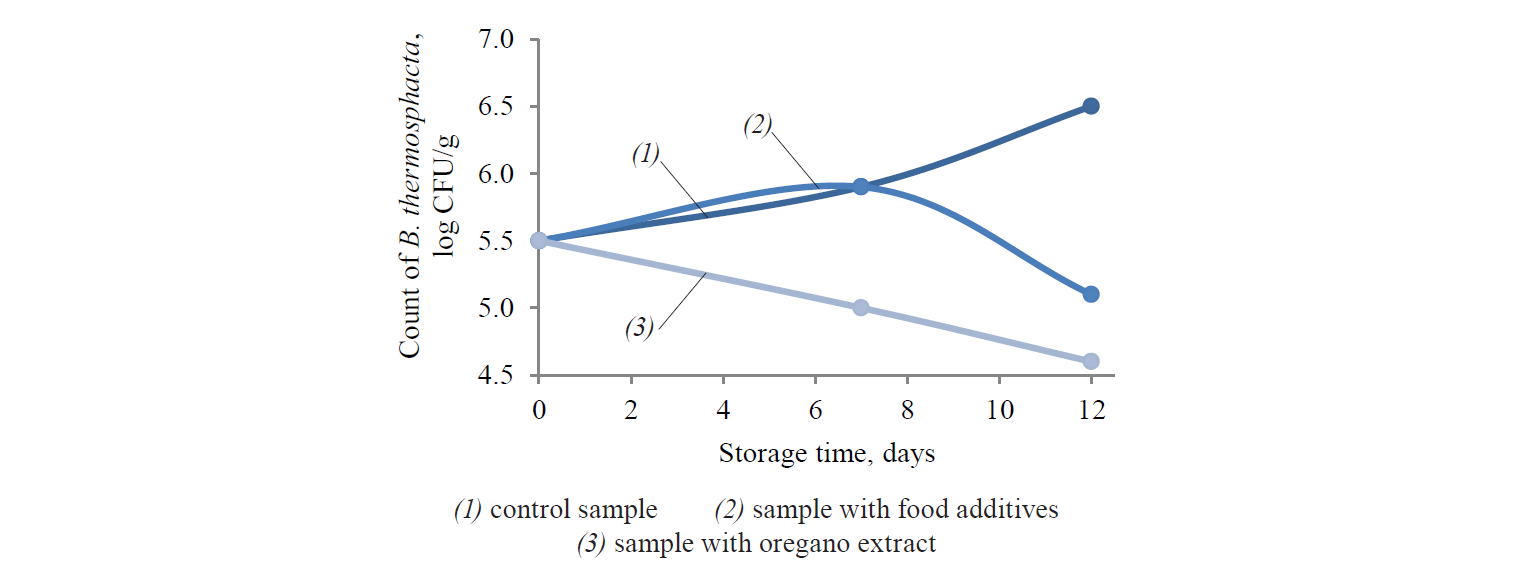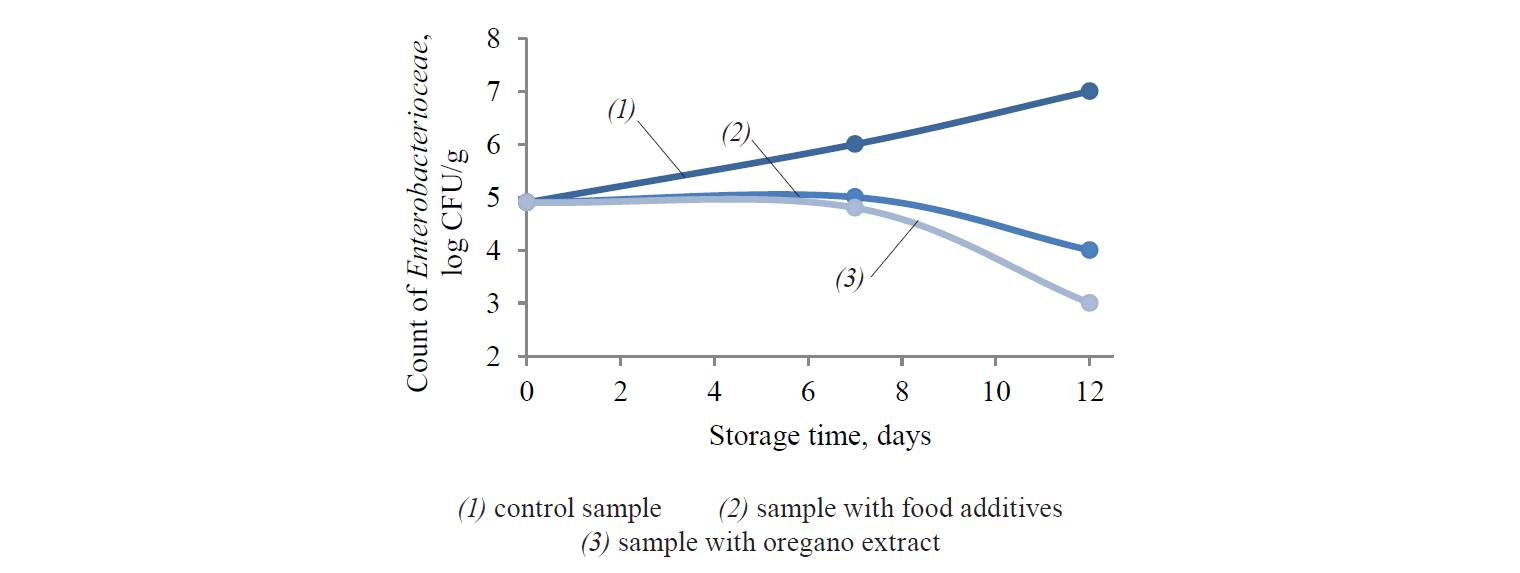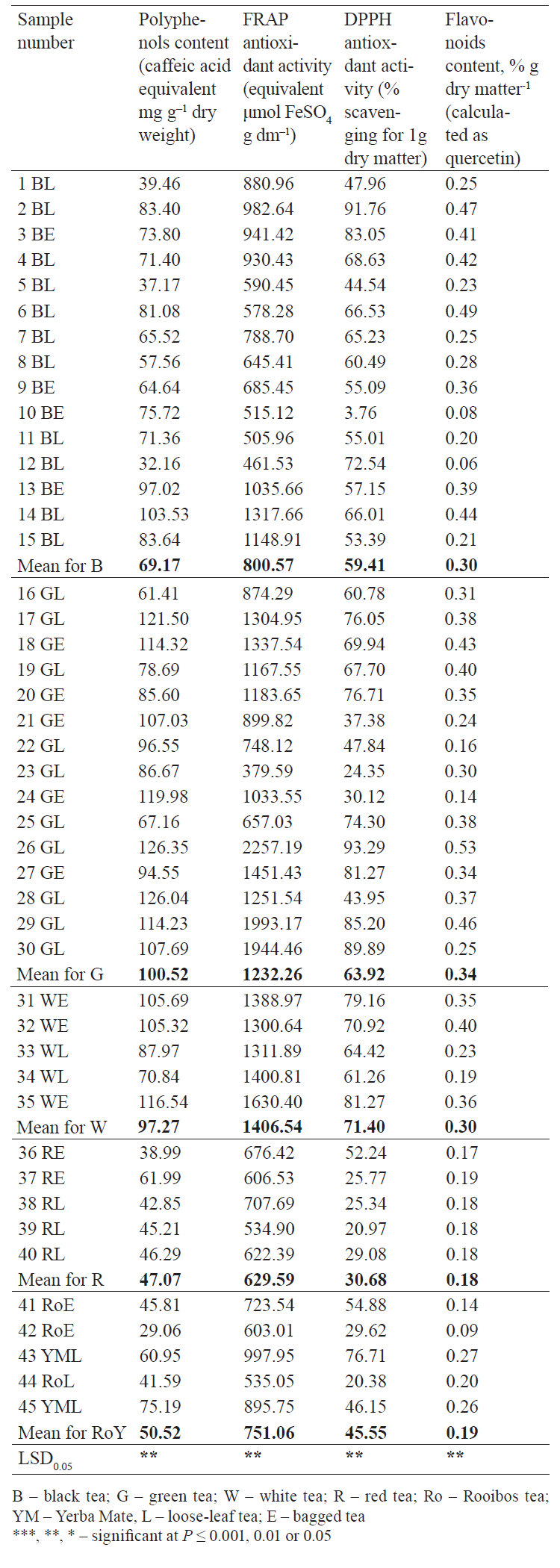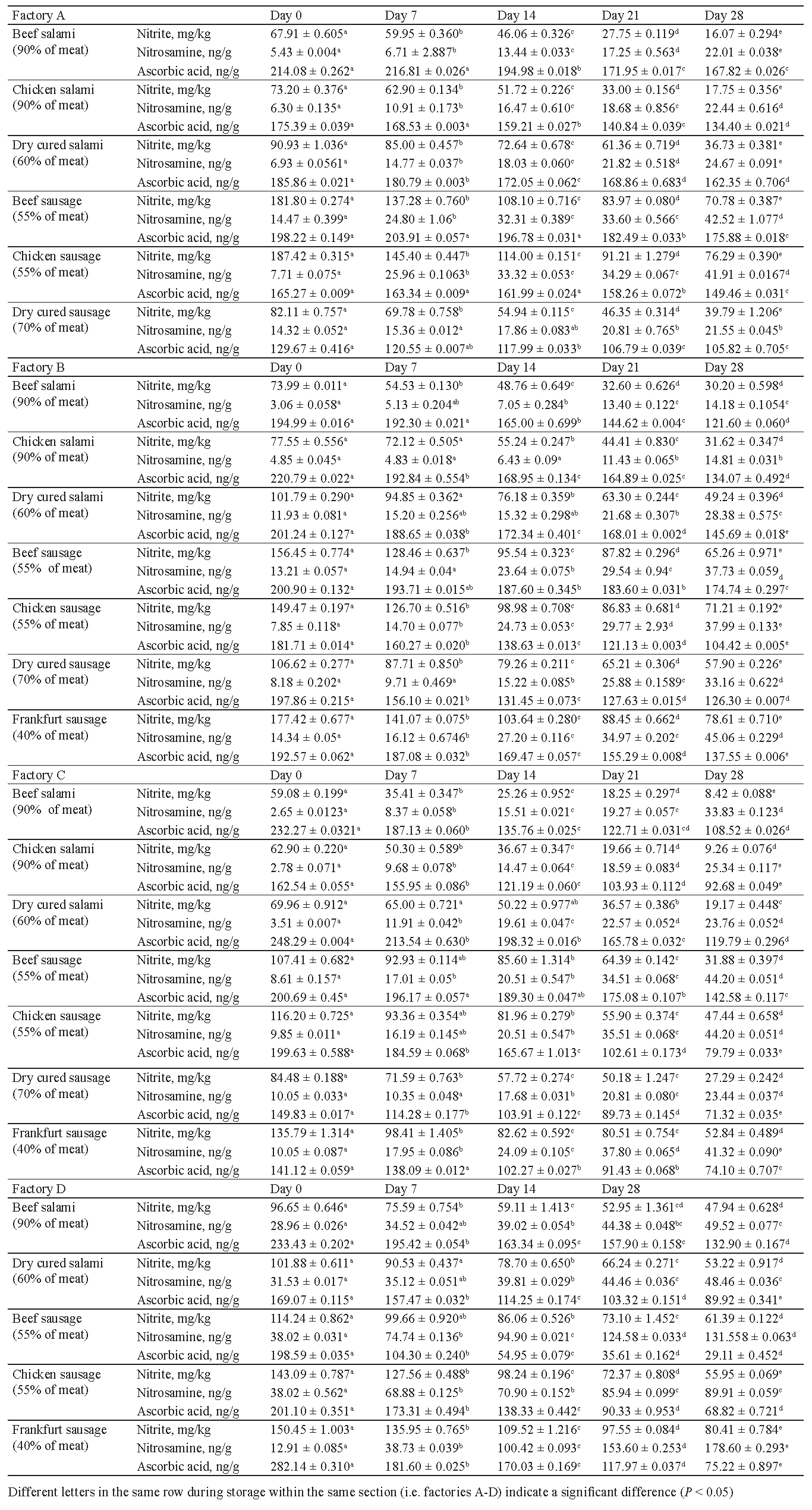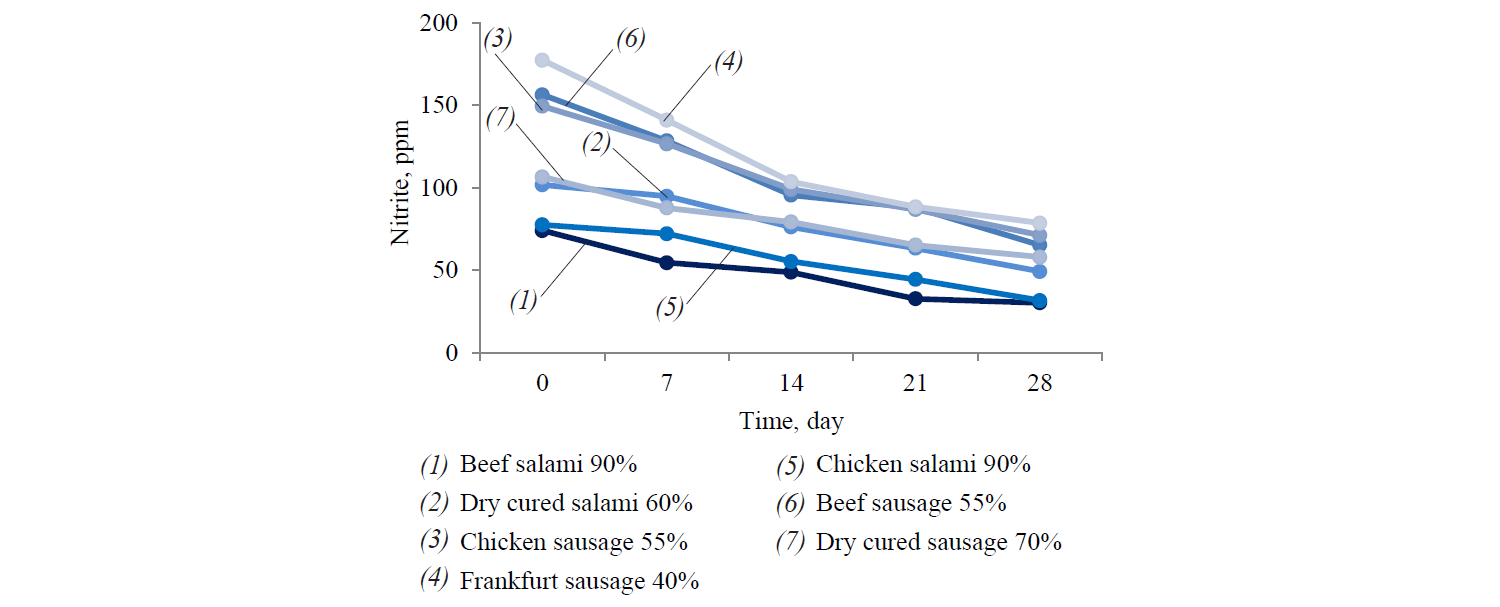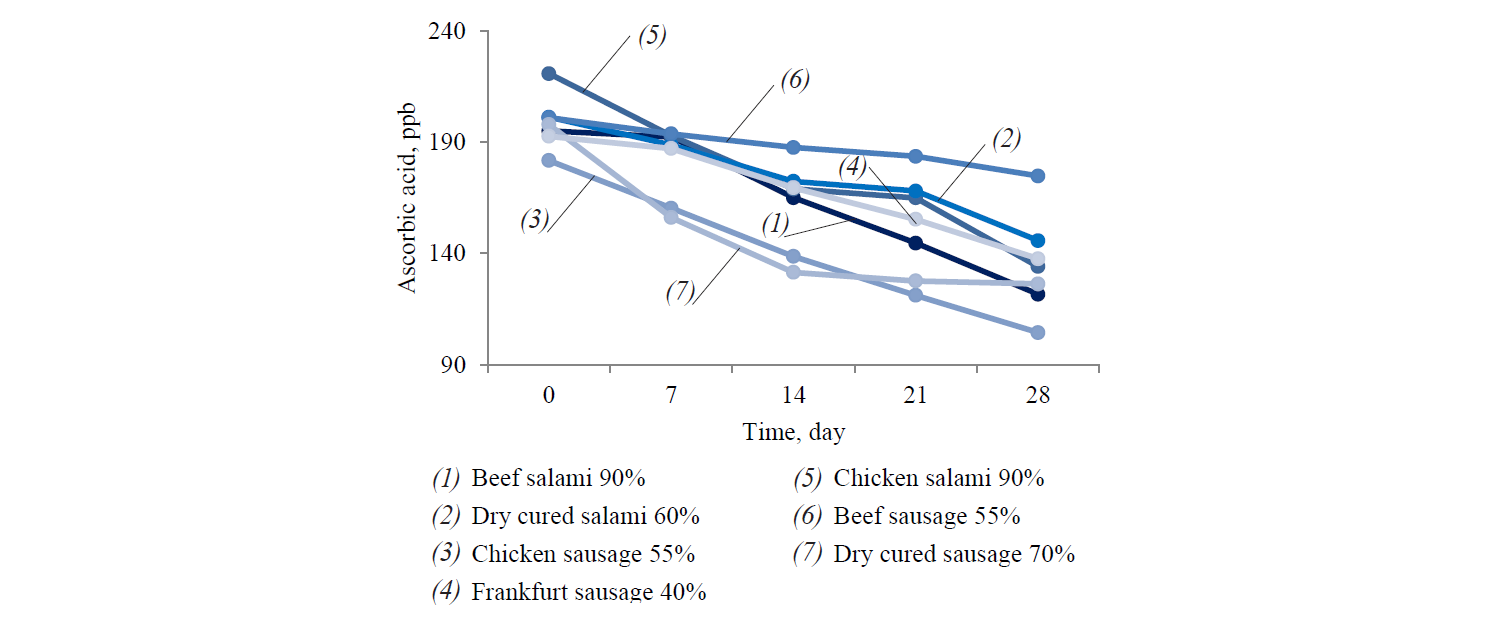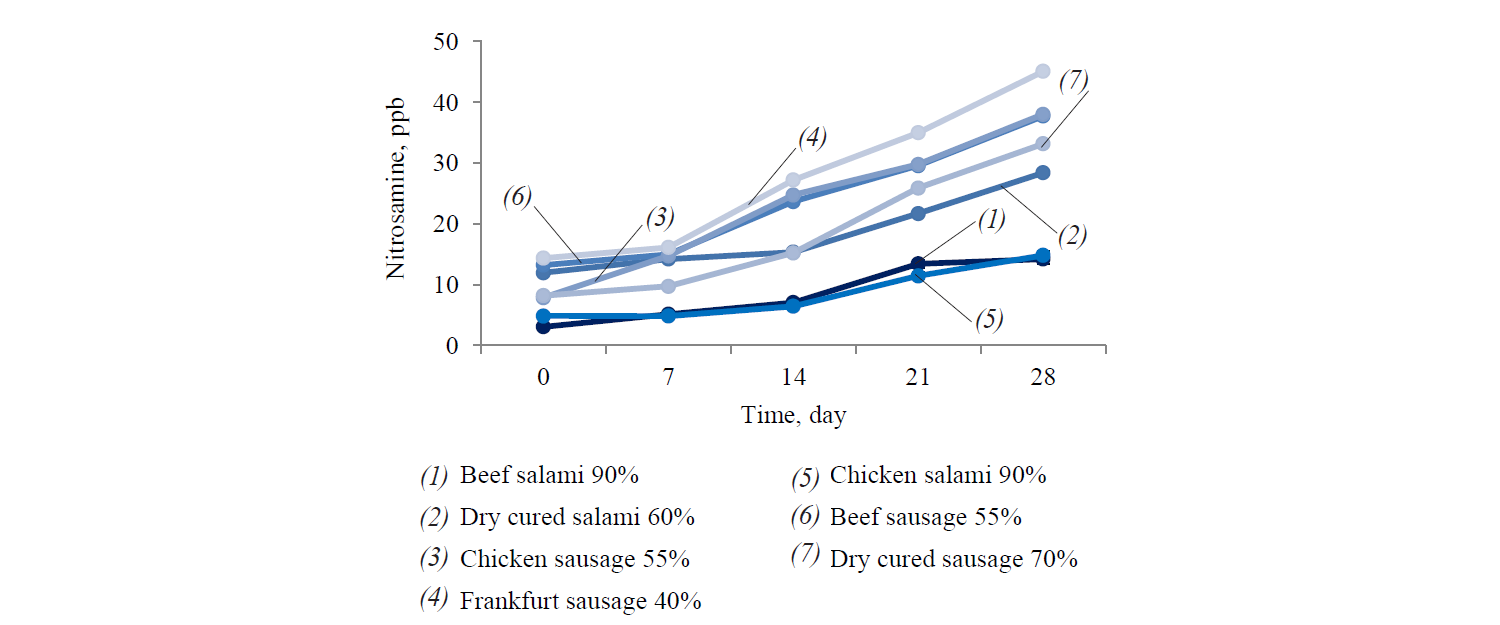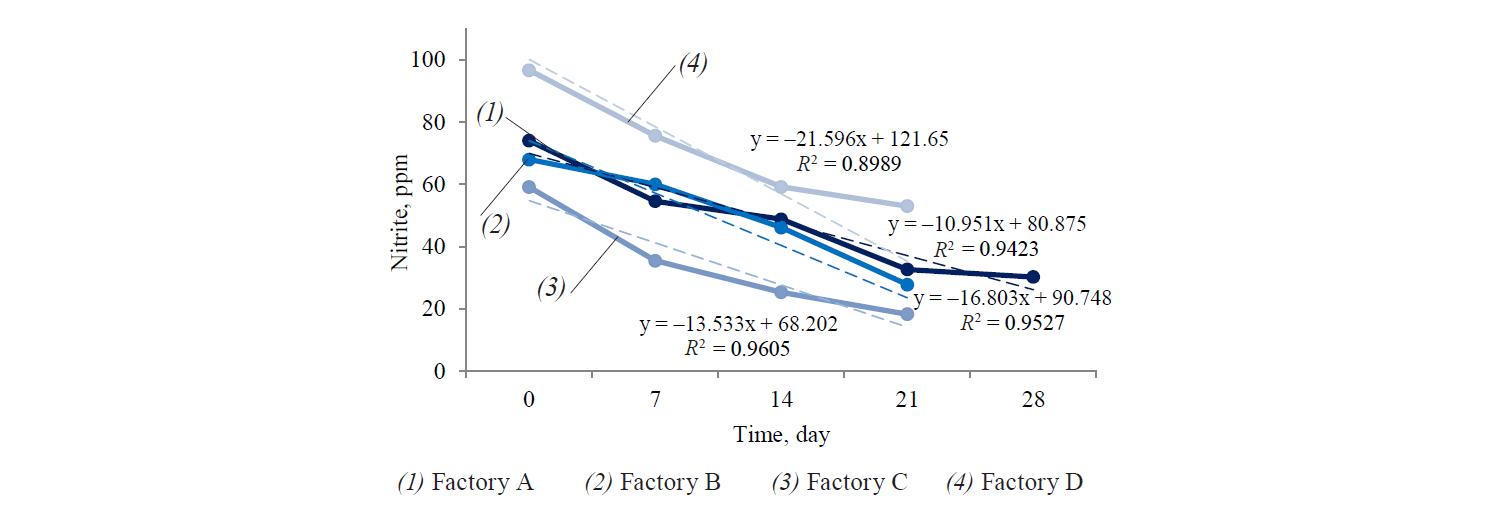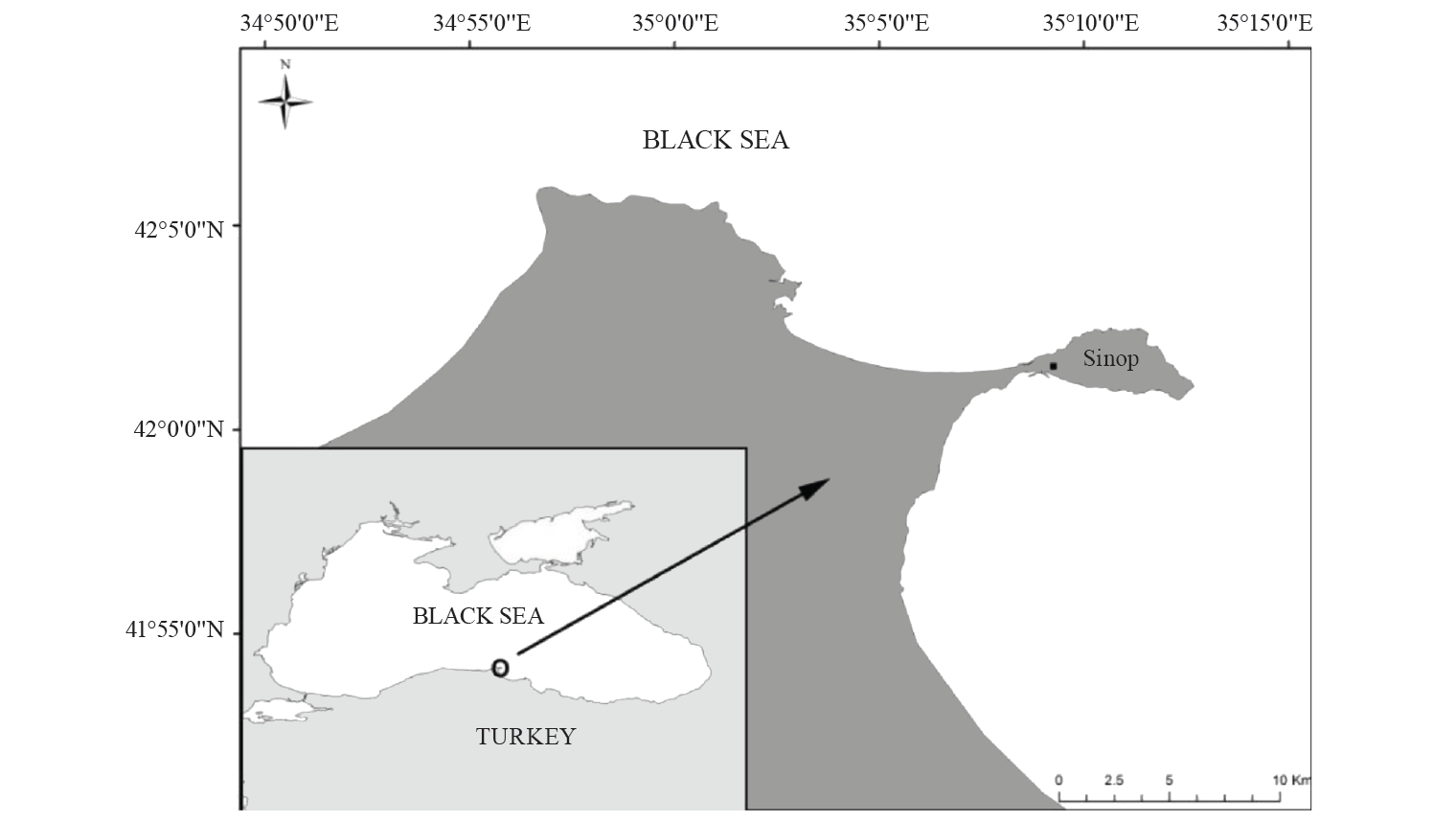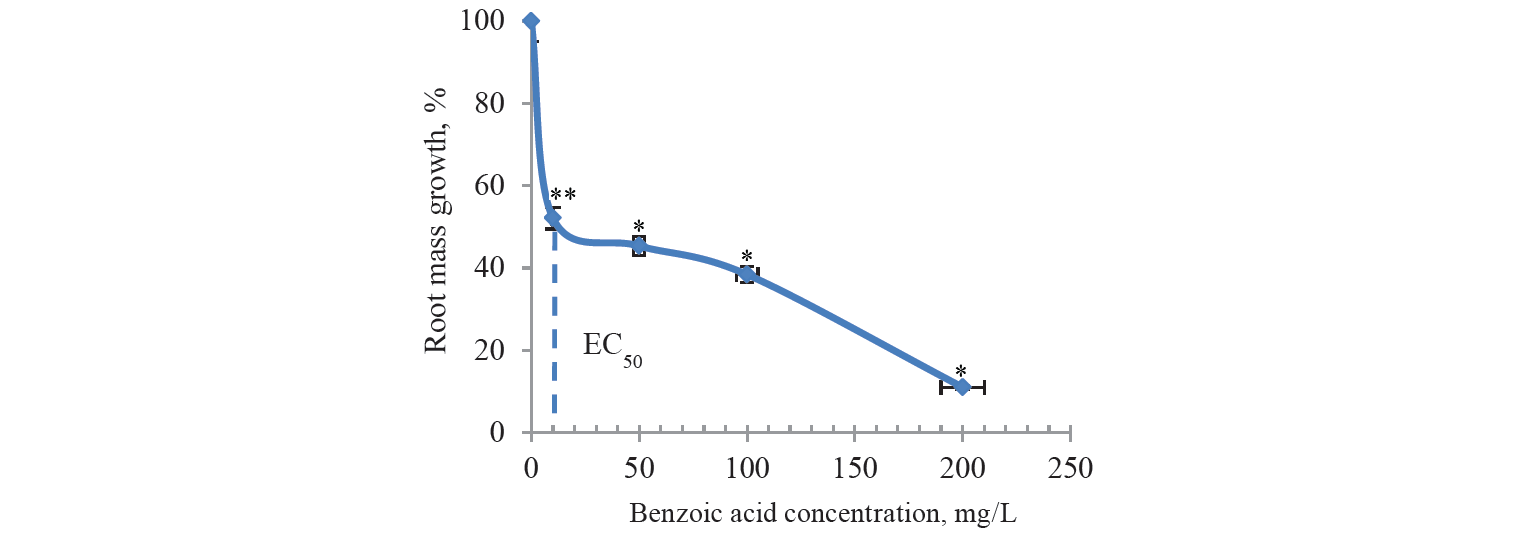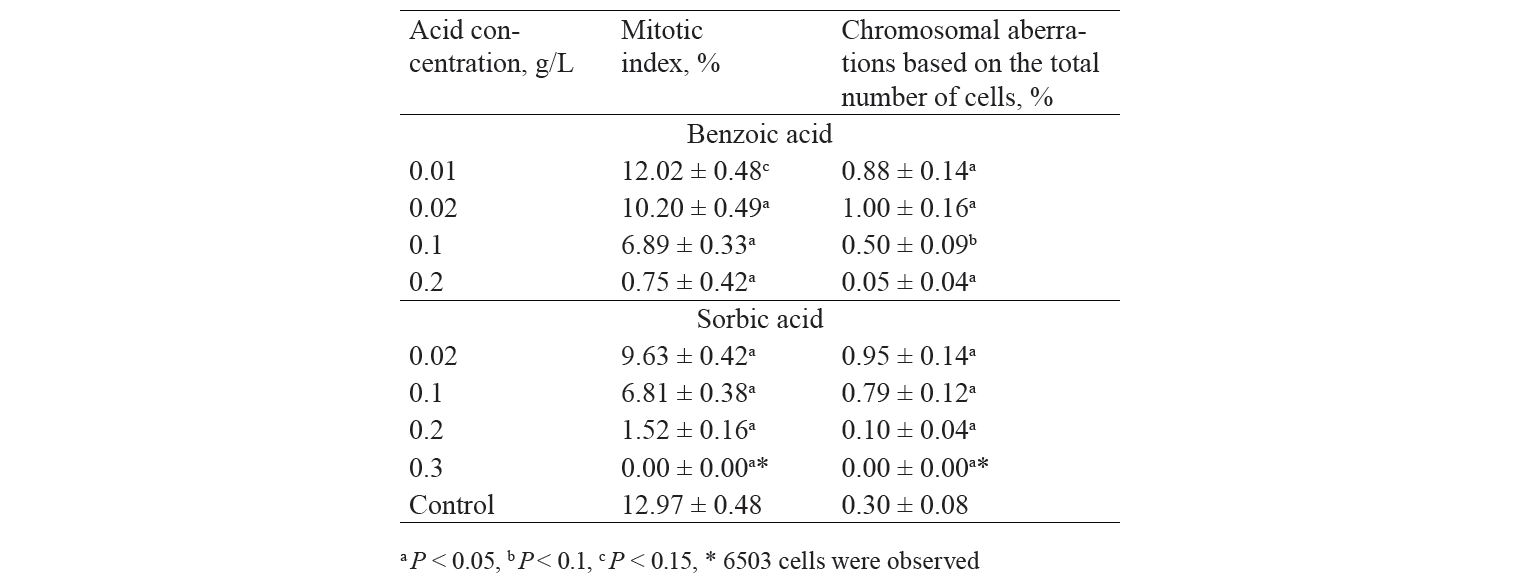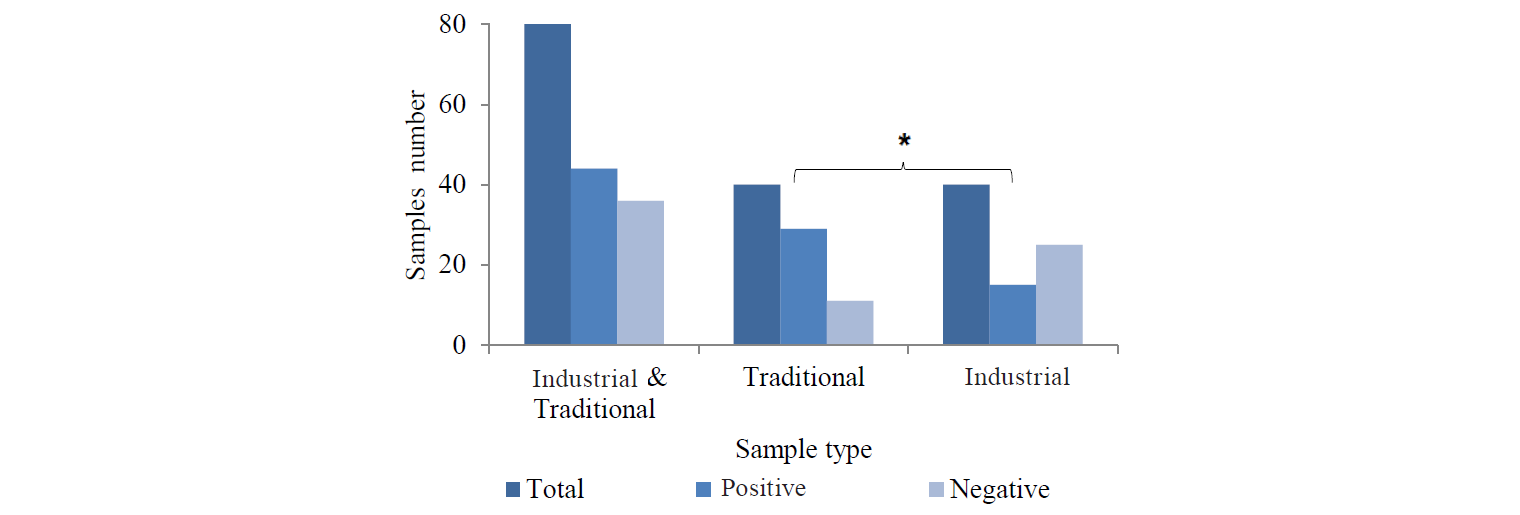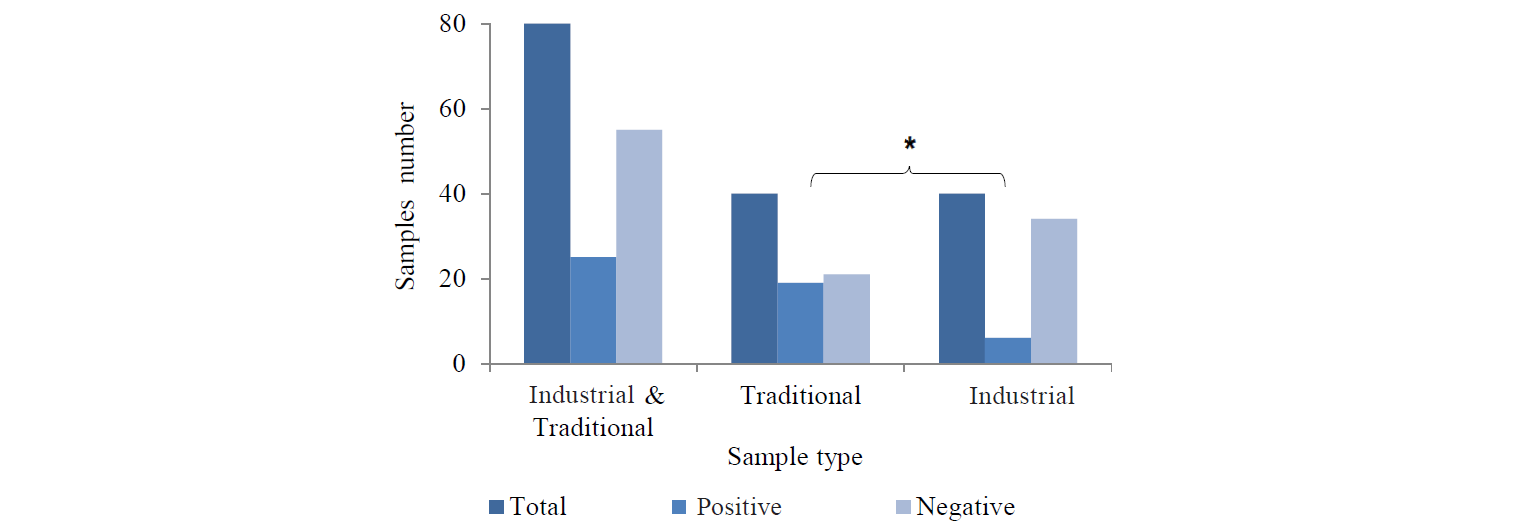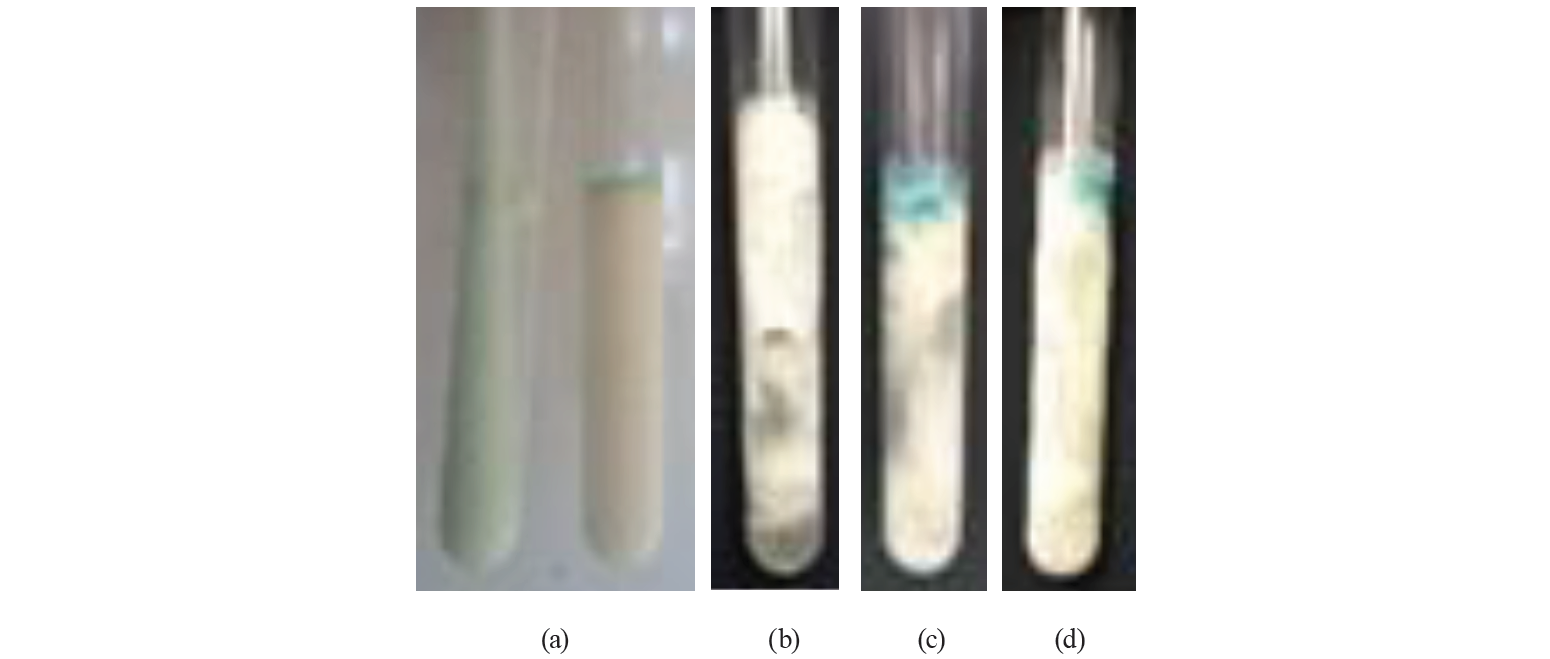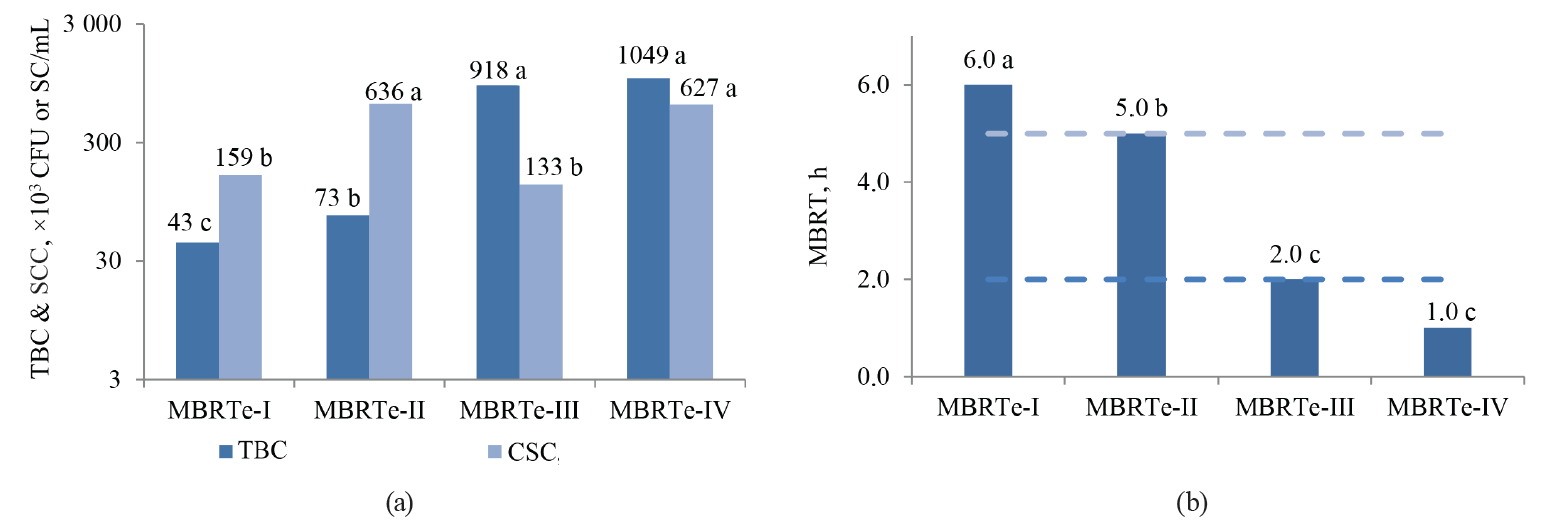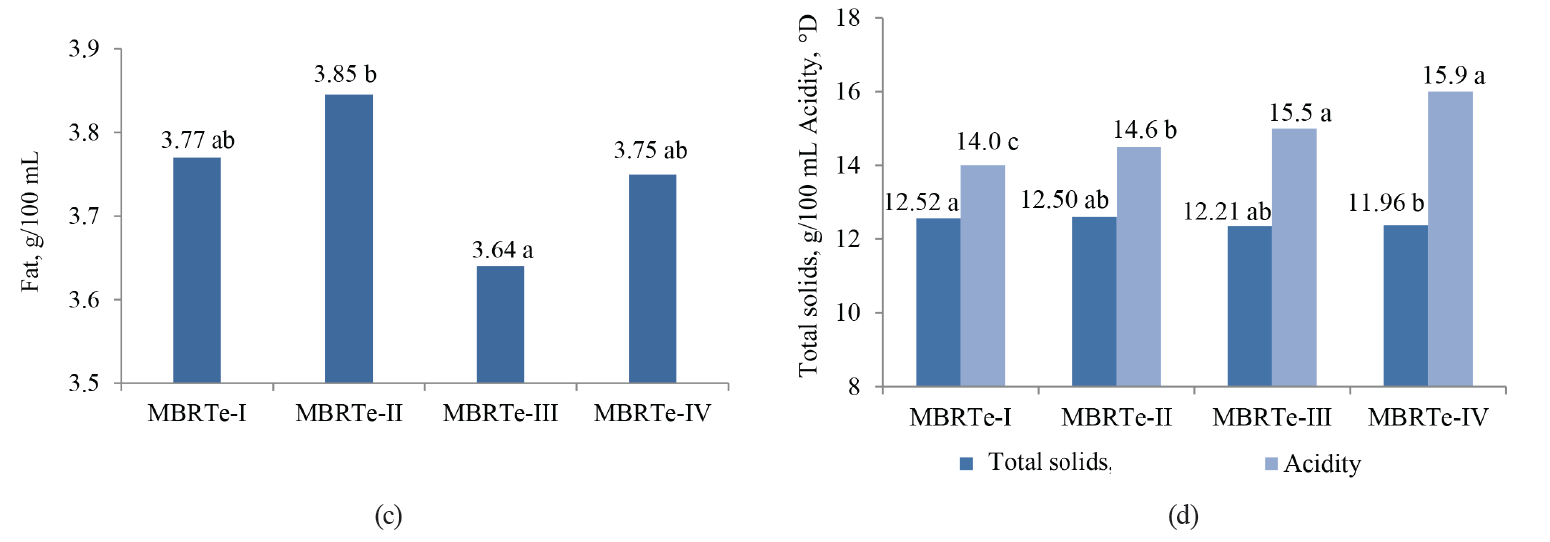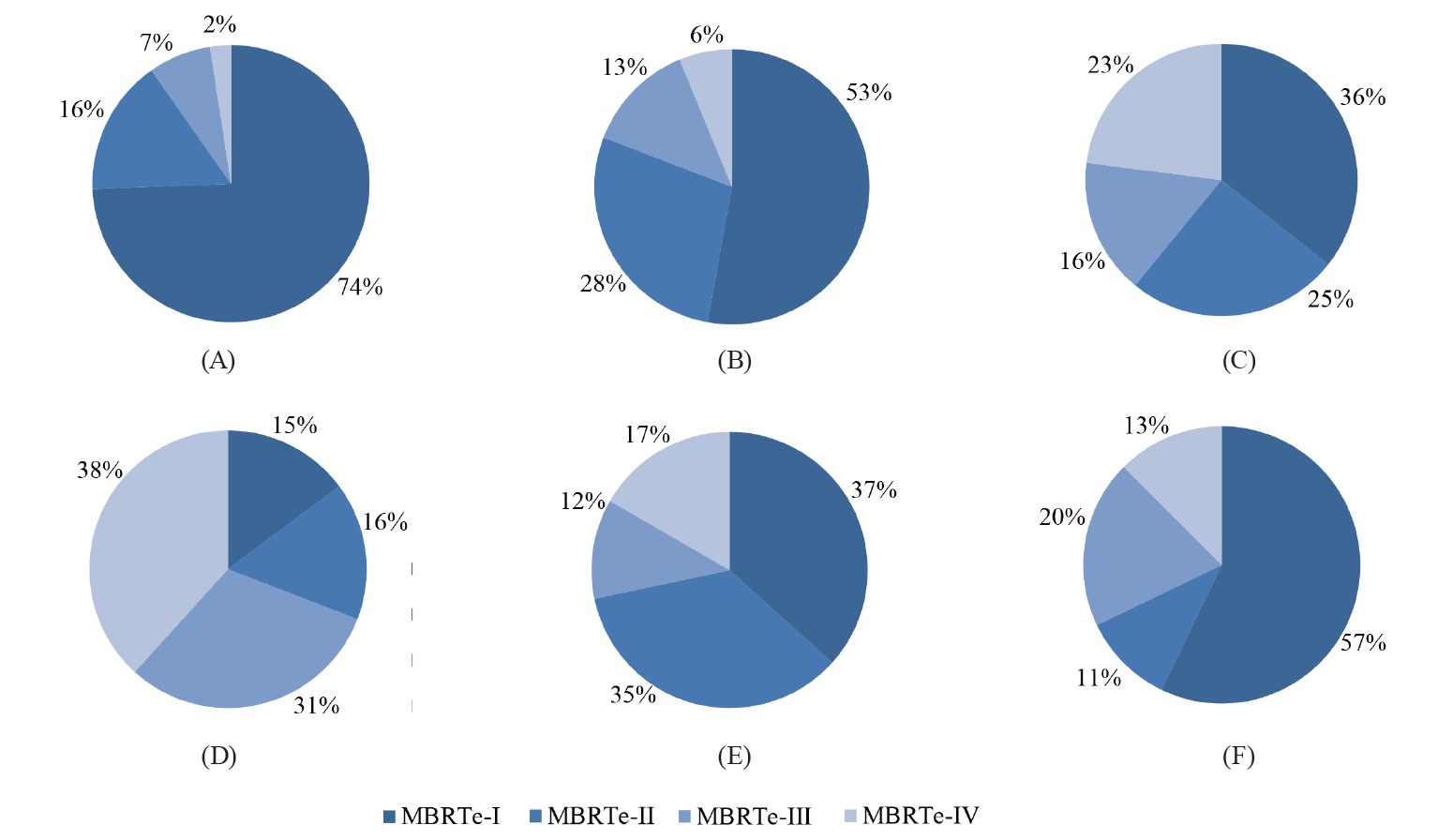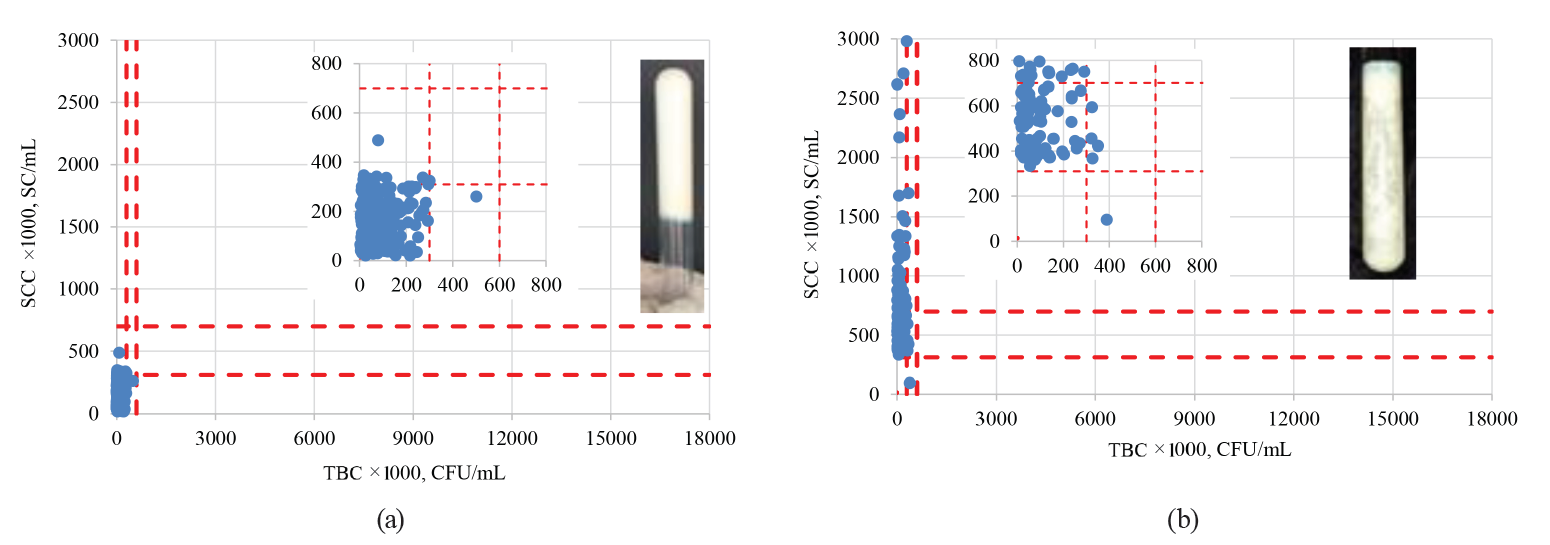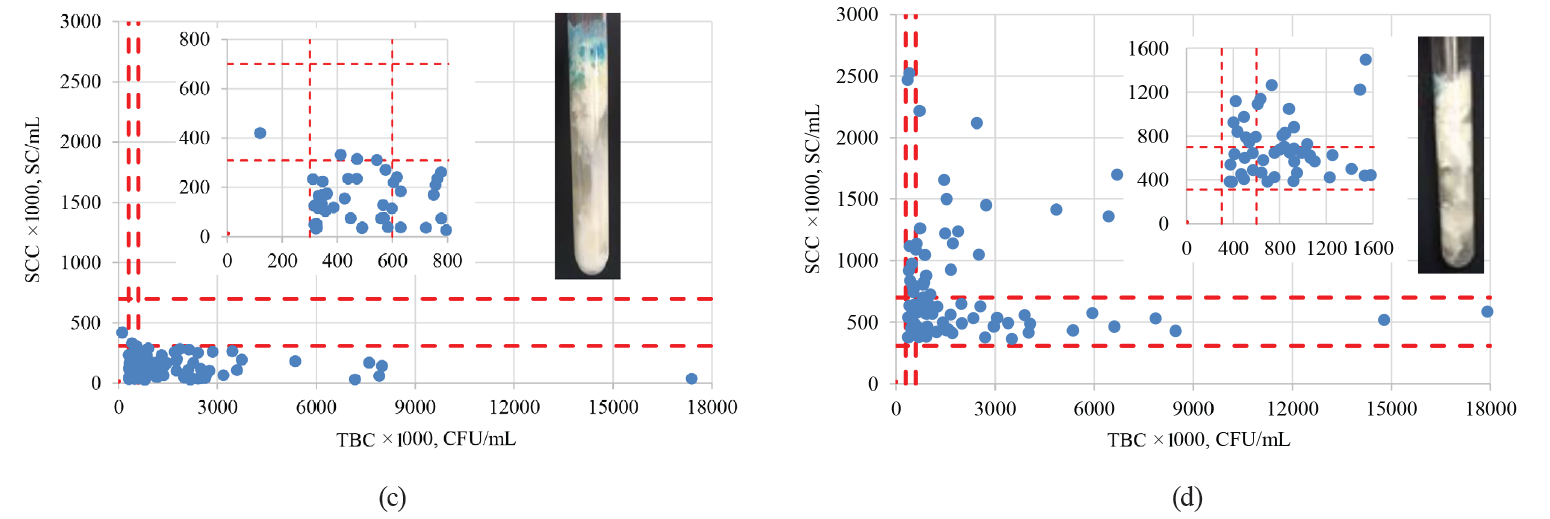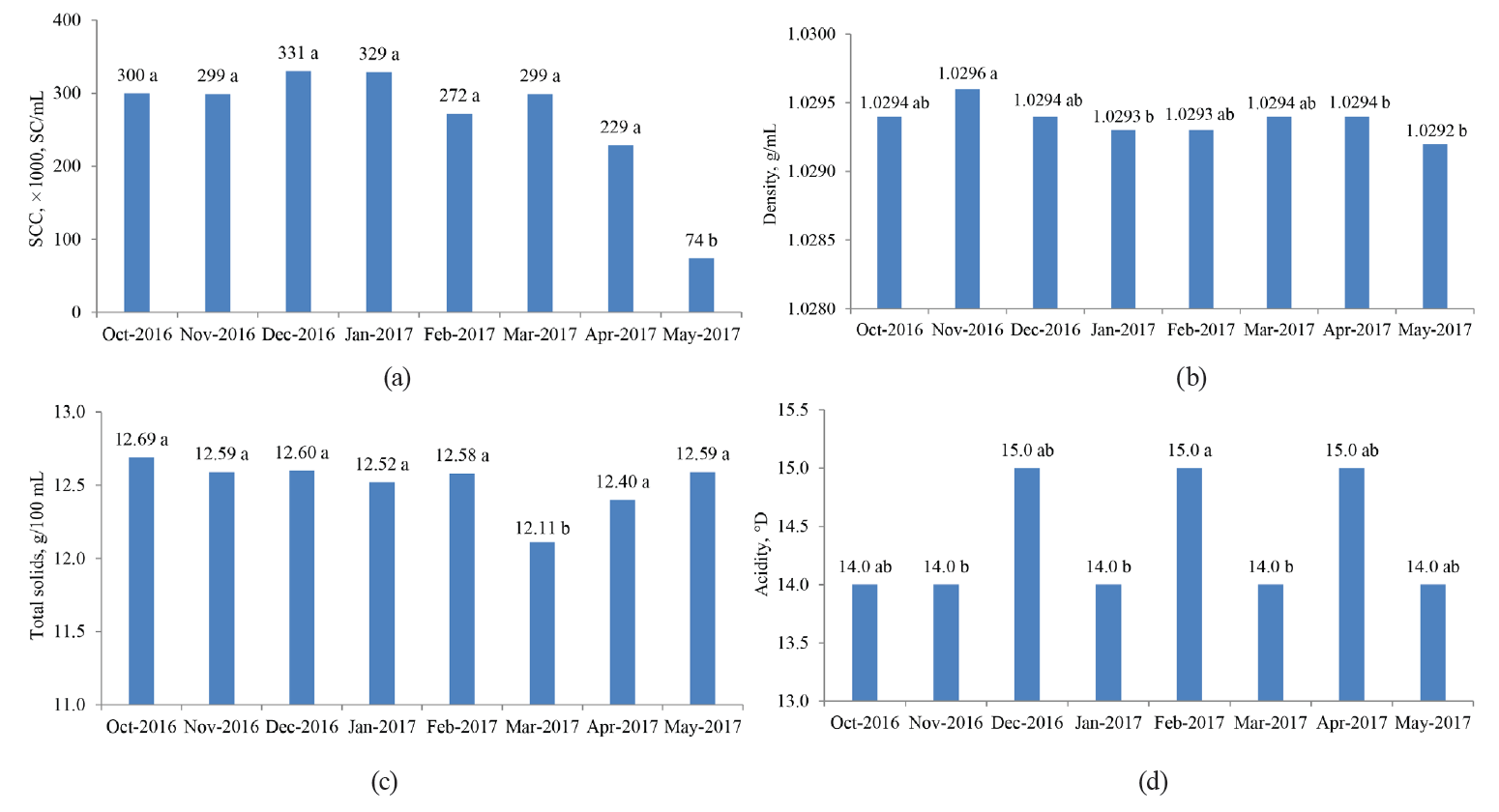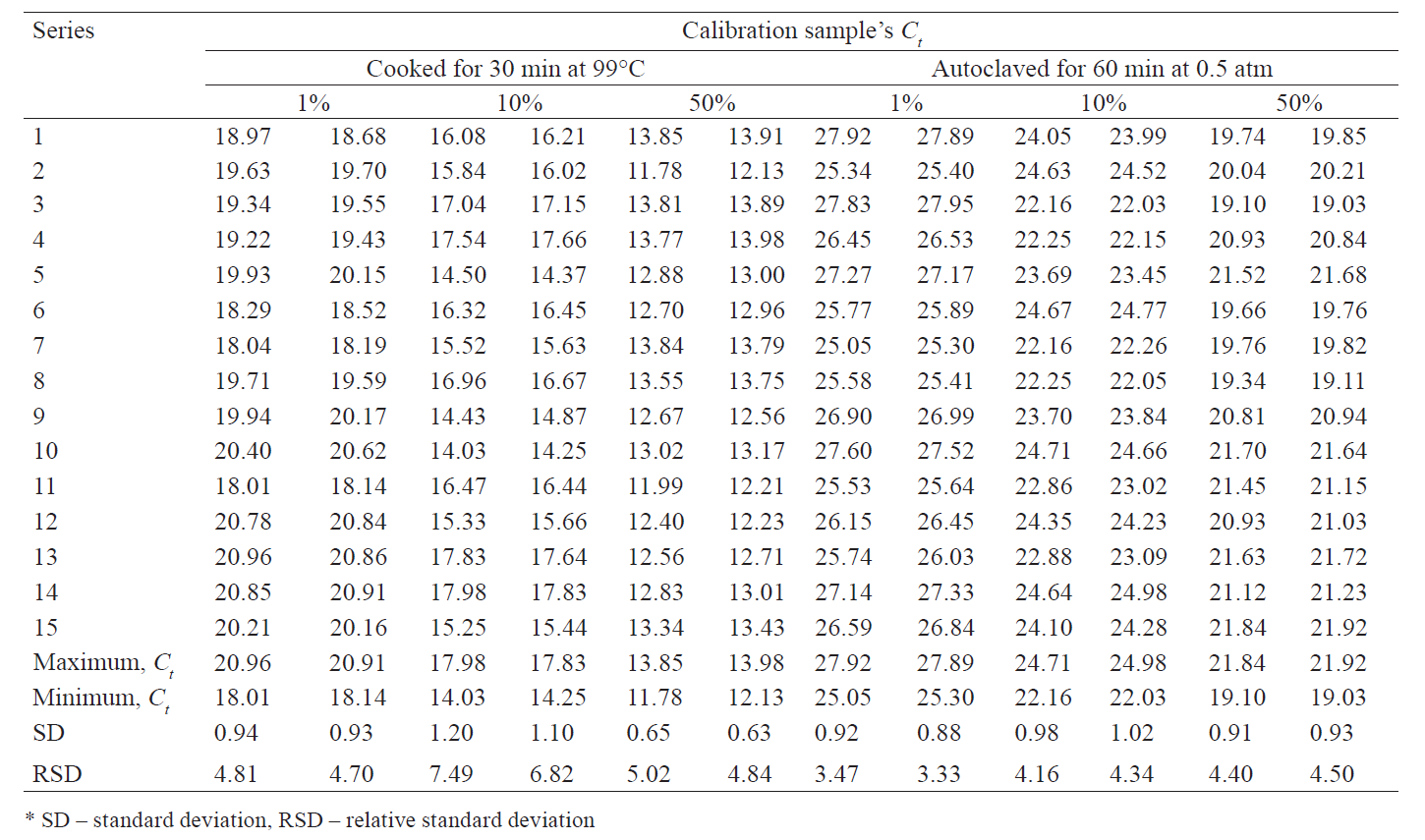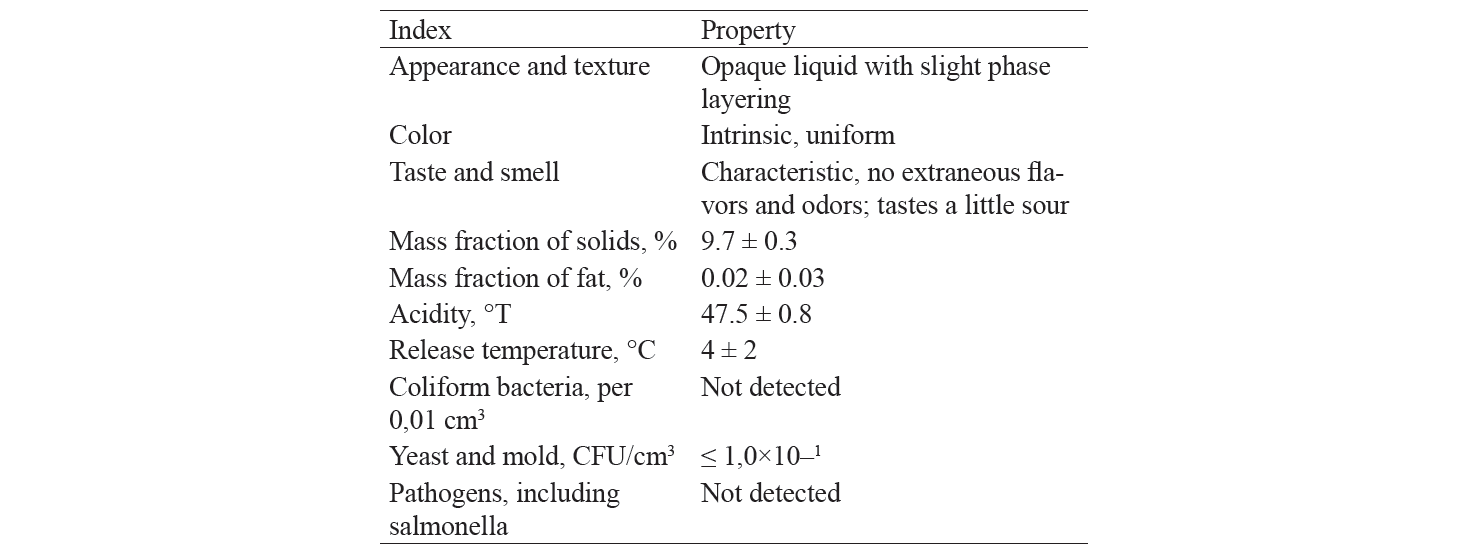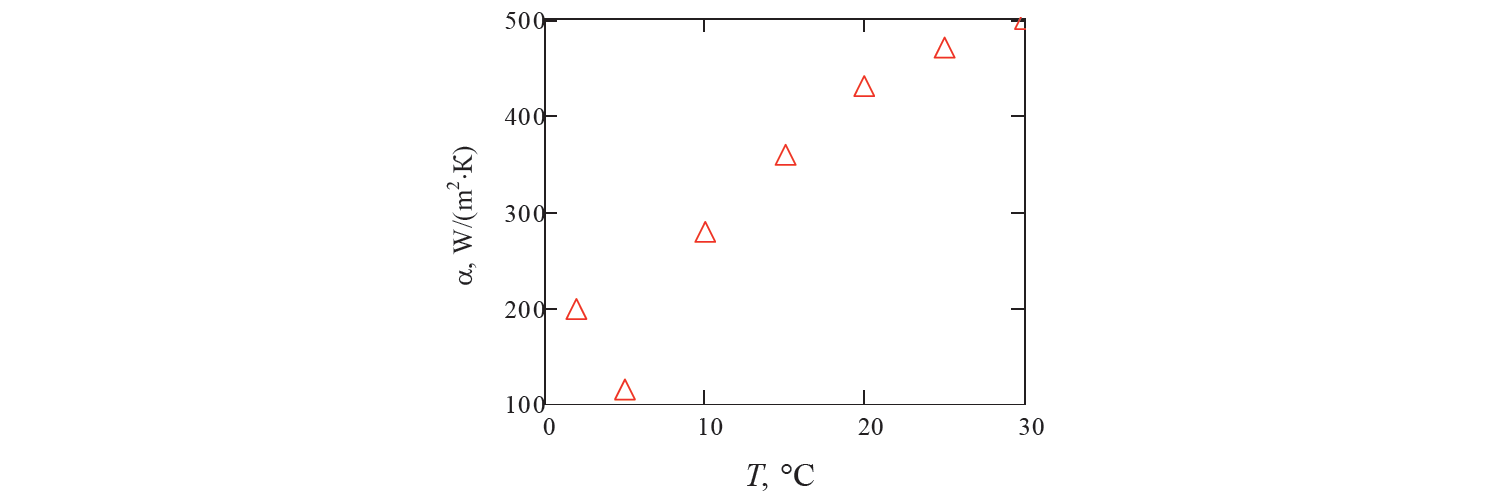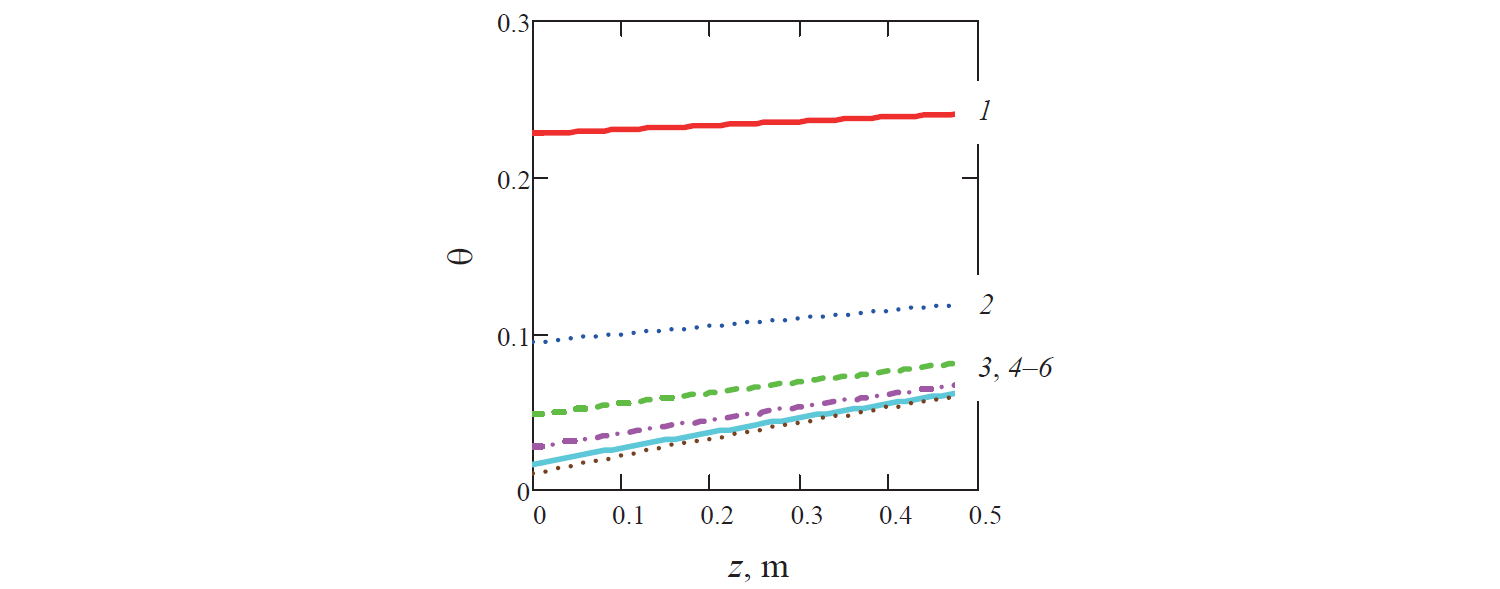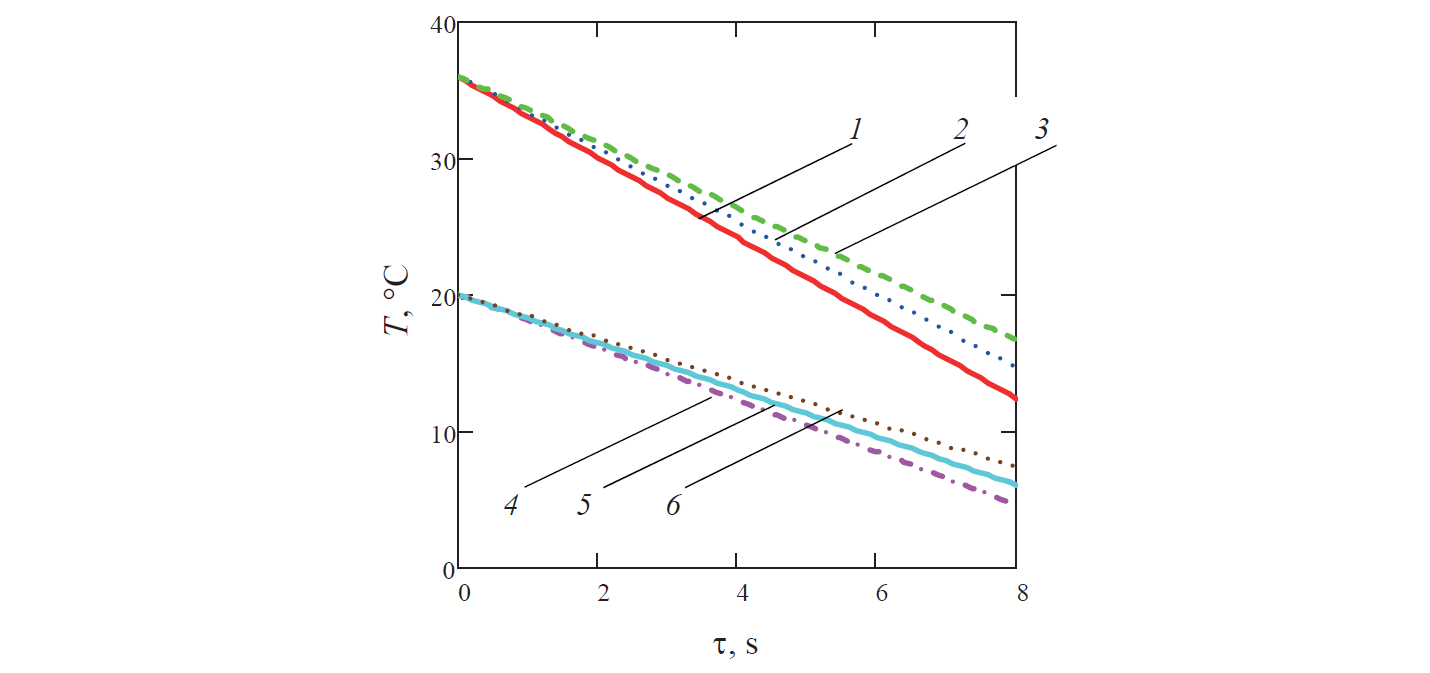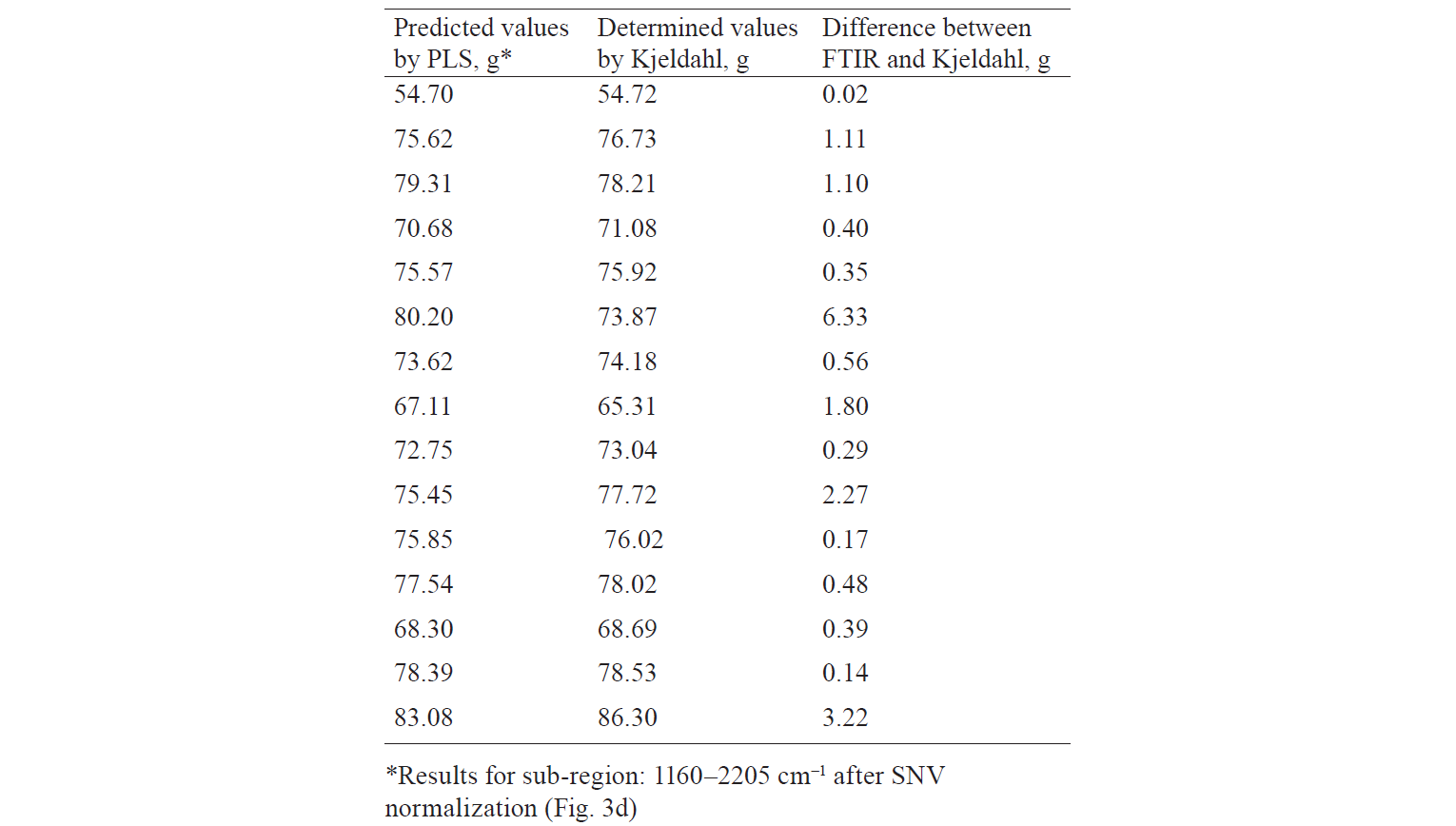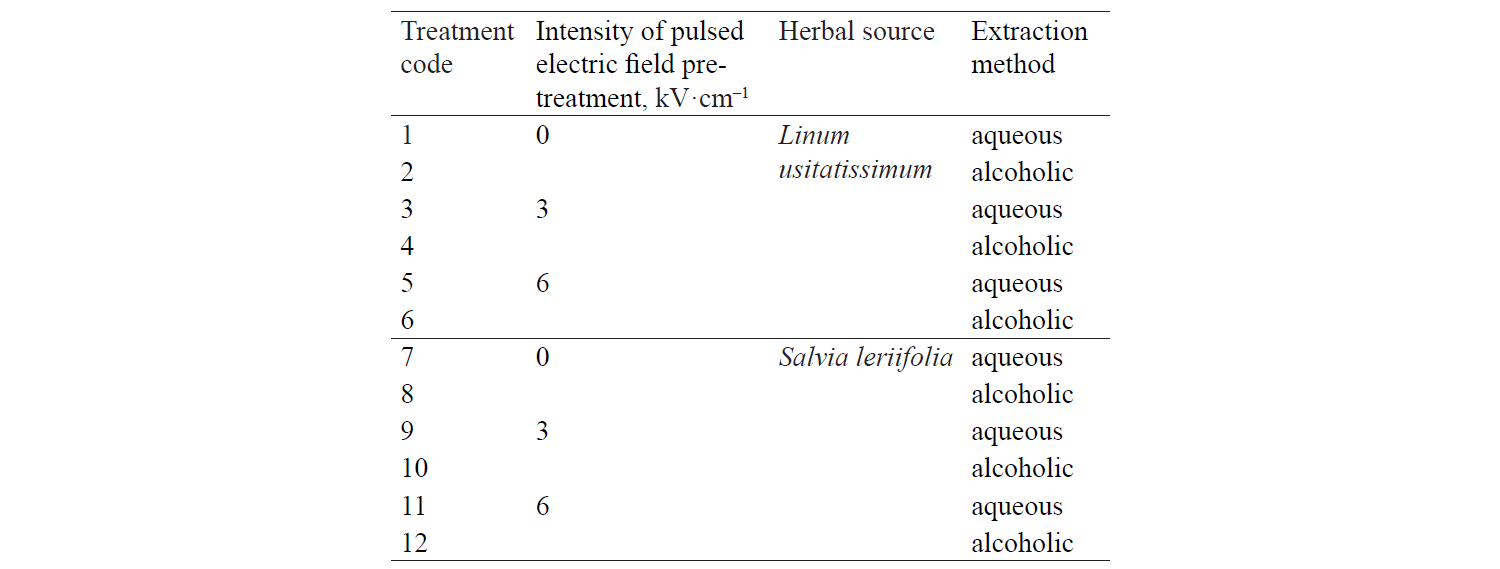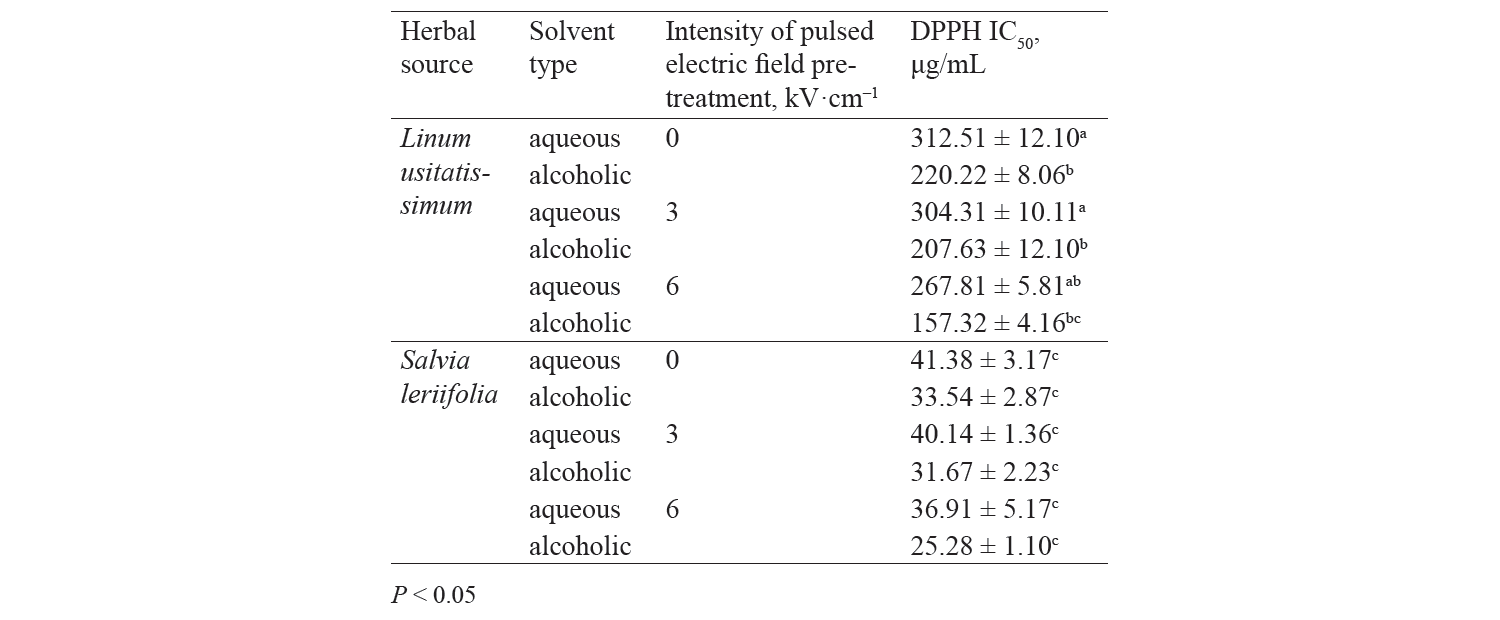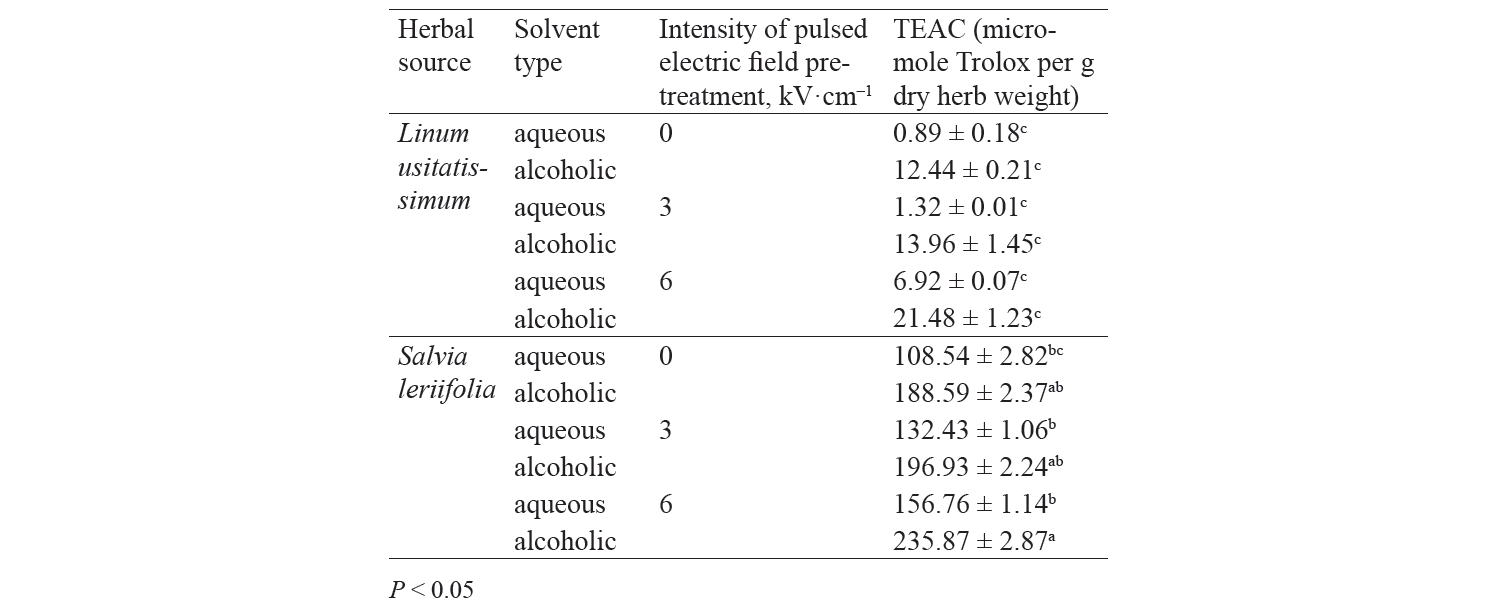Том 8, №1, 2020
9431
Аннотация
Таблицы и рисунки
The article summarizes some scientific and practical prerequisites for creating multicomponent foods with desirable quality characteristics and consumer properties. Mathematical methods were used to model a multicomponent product according to the selected parameters of adequacy and quality, depending on the nutritional and biological value of raw materials. The Russian methodology of food design originated in the works of N.N. Lipatov. His six basic principles of designing balanced multicomponent foods are still relevant today. Further development was proposed by A.B. Lisitsyn who took into account individual protein digestibility of every component in the mixture and its effect on the amino acid composition of total protein. At the next stage, Yu.A. Ivashkin improved formulations using the methods of system analysis, modelling, and product range optimization. Modern food chemistry, food biotechnology, and information technologies allow for effective computer design and optimization of multicomponent food formulations for specific population groups. As a result, an increasing number of food scientists are engaged in improving food products. Literature analysis showed that the current stages of designing (modelling) multicomponent foods are mainly based on information and algorithms, using linear, experimental and statistical programming methods or an object-oriented approach. Russian food scientists still use the methodology developed by A.M. Brazhnikov, I.A. Rogov, and N.N. Lipatov. It allows for designing multicomponent foods with specified nutritional indicators and energy value. The Russian Academy of Sciences pointed to a need for “digital nutritiology” (Decree No. 178 of November 27, 2018 “On Current Problems of Optimizing the Population of Russia: Role of Science”). This new scientific direction could enable digital transformation of data on human physiological needs for nutrients, biologically active substances, and energy, as well as the chemical composition of basic foods. There is also a need for computer programs to give personalized recommendations for optimal nutrition.
10669
Аннотация
Таблицы и рисунки
The paper deals with the theory of fuzzy sets as applied to food industry products. The fuzzy indicator function is shown as a criterion for determining the properties of the product. We compared the approach of fuzzy and probabilistic classifiers, their fundamental differences and areas of applicability. As an example, a linear fuzzy classifier of the product according to one-dimensional criterion was given and an algorithm for its origination as well as approximation is considered, the latter being sufficient for the food industry for the most common case with one truth interval where the indicator function takes the form of a trapezoid. The results section contains exhaustive, reproducible, sequentially stated examples of fuzzy logic methods application for properties authentication and group affiliation of food products. Exemplified by measurements of the criterion with an error, we gave recommendations for determining the boundaries of interval identification for foods of mixed composition. Harrington’s desirability function is considered as a suitable indicator function of determining deterioration rate of a food product over time. Applying the fuzzy logic framework, identification areas of a product for the safety index by the time interval in which the counterparty selling this product should send it for processing, hedging their possible risks connected with the expiry date expand. In the example of multi-criteria evaluation of a food product consumer attractiveness, Harrington’s desirability function, acting as a quality function, was combined with Weibull probability density function, accounting for the product’s taste properties. The convex combination of these two criteria was assumed to be the decision-making function of the seller, by which identification areas of the food product are established.
73545
Аннотация
Таблицы и рисунки
Introduction. Overweight and obesity are leading risk factors for metabolic syndrome (MS). From 20 to 35% of Russian people have this condition, depending on their age. MS is a precursor of cardiovascular disease, diabetes mellitus, diabetic nephropathy, and nonalcoholic steatohepatitis. Specialized foods (SFs) with hypocholesteremic effects are an important component of the diet therapy for MS patients. Creating local SFs to optimize the nutritional status of MS patients and prevent related diseases is a highly promising area of research. The aim of our study was to develop the formulation and technology of SFs and evaluate their effectiveness in MS treatment.
Study objects and methods. The objects of the study were food ingredients and SFs. Safety indicators and micronutrient contents were determined by standard methods, whereas nutritional and energy values and amino acid contents were determined by calculation.
Results and discussion. Based on medical requirements, we selected functional ingredients and developed a formulation and technology of SFs with an optimized protein, fat, and carbohydrate composition. The formulation included essential micronutrients and biologically active substances with a desirable physiological effect. Clinical trials involved 15 MS patients aged from 27 to 59. For two weeks, they had a low-calorie standard diet with one serving of SFs in the form of a drink instead of a second breakfast. The patients showed a significant improvement in anthropometric indicators. Blood serum tests revealed decreased contents of total cholesterol (by 16.9%), low-density lipoprotein cholesterol (by 15.3%), and triglycerides (by 27.9%).
Conclusion. We developed technical specifications and produced a pilot batch of SFs. The trials showed an improvement of lipid metabolism in the MS patients who were taking SFs as part of their diet therapy.
Study objects and methods. The objects of the study were food ingredients and SFs. Safety indicators and micronutrient contents were determined by standard methods, whereas nutritional and energy values and amino acid contents were determined by calculation.
Results and discussion. Based on medical requirements, we selected functional ingredients and developed a formulation and technology of SFs with an optimized protein, fat, and carbohydrate composition. The formulation included essential micronutrients and biologically active substances with a desirable physiological effect. Clinical trials involved 15 MS patients aged from 27 to 59. For two weeks, they had a low-calorie standard diet with one serving of SFs in the form of a drink instead of a second breakfast. The patients showed a significant improvement in anthropometric indicators. Blood serum tests revealed decreased contents of total cholesterol (by 16.9%), low-density lipoprotein cholesterol (by 15.3%), and triglycerides (by 27.9%).
Conclusion. We developed technical specifications and produced a pilot batch of SFs. The trials showed an improvement of lipid metabolism in the MS patients who were taking SFs as part of their diet therapy.
10560
Аннотация
Таблицы и рисунки
Introduction. Development of novel meat products with better quality and biological value remains one of priority objectives of modern food industry. New meat products correspond with the principles of healthy diet due to their improved fatty acid profile and lower sodium content. The present research featured semi-smoked sausages with 15% of cedar oilcake and a low-sodium curing mix. The cedar nut oilcake is as a source of highly unsaturated fatty acids and high-grade protein. In addition to the physiological effect, the low-sodium curing mix increases the resistance of the combined fat phase to deterioration during storage.
Study objects and methods. Sausages of control and experimental formulations were made in laboratory conditions. The control formulation included raw second-grade beef, semi-fat pork (30% of fat), and traditional curing ingredients, i.e. sodium chloride and nitrite curing mix. In the experimental formulation, 15% of the semi-fat pork was replaced by cedar oil cake, and 30% of sodium chloride – by magnesium chloride. The samples were tested for fatty and amino acid composition, biological value of the lipid and protein phase, chemical composition, as well as physical, chemical, and sensory properties. Other research data included water activity, as well as acid, peroxide, and thiobarbituric value during storage at a temperature of 4 ± 2°C for 15 days.
Results and discussion. The study of fatty acid composition showed significant differences in the ratio of saturated (SFA), monounsaturated (MUFA), and polyunsaturated fatty acids (PUFA, P ˂ 0.05) in the samples. When 15% of pork was replaced by cedar oilcake, the amount of SFA decreased by 19.8%, while the content of MUFA and PUFA increased by 10.2% and 24.9%, respectively. These changes improved the indices of atherogenicity and thrombogenicity. The quality of the protein component also improved, as the utility coefficient of amino acids increased from 0.83 to 0.87, and the coefficient of comparable redundancy decreased from 7.2 g/100 g of protein to 5.35 g/100 g of protein. The sausages with cedar oil cake and low sodium chloride content received a high consumer evaluation. The hydrolysis of the lipid fraction was the same in both samples. The process of lipid oxidation was inhibited, which can partially be explained by a lower water activity.
Conclusion. The biological value, consumer quality, and storage stability of semi-smoked sausages could be improved by replacing fat-containing meat raw materials with cedar oil cake and reducing sodium chloride content. The new product demonstrated a better nutrition quality and can be recommended for mass production.
Study objects and methods. Sausages of control and experimental formulations were made in laboratory conditions. The control formulation included raw second-grade beef, semi-fat pork (30% of fat), and traditional curing ingredients, i.e. sodium chloride and nitrite curing mix. In the experimental formulation, 15% of the semi-fat pork was replaced by cedar oil cake, and 30% of sodium chloride – by magnesium chloride. The samples were tested for fatty and amino acid composition, biological value of the lipid and protein phase, chemical composition, as well as physical, chemical, and sensory properties. Other research data included water activity, as well as acid, peroxide, and thiobarbituric value during storage at a temperature of 4 ± 2°C for 15 days.
Results and discussion. The study of fatty acid composition showed significant differences in the ratio of saturated (SFA), monounsaturated (MUFA), and polyunsaturated fatty acids (PUFA, P ˂ 0.05) in the samples. When 15% of pork was replaced by cedar oilcake, the amount of SFA decreased by 19.8%, while the content of MUFA and PUFA increased by 10.2% and 24.9%, respectively. These changes improved the indices of atherogenicity and thrombogenicity. The quality of the protein component also improved, as the utility coefficient of amino acids increased from 0.83 to 0.87, and the coefficient of comparable redundancy decreased from 7.2 g/100 g of protein to 5.35 g/100 g of protein. The sausages with cedar oil cake and low sodium chloride content received a high consumer evaluation. The hydrolysis of the lipid fraction was the same in both samples. The process of lipid oxidation was inhibited, which can partially be explained by a lower water activity.
Conclusion. The biological value, consumer quality, and storage stability of semi-smoked sausages could be improved by replacing fat-containing meat raw materials with cedar oil cake and reducing sodium chloride content. The new product demonstrated a better nutrition quality and can be recommended for mass production.
9432
Аннотация
Таблицы и рисунки
In this study, we used a water-in-oil (W/O) emulsion encapsulation technique to enhance green coffee extract in the novel kashk product and protect it against hot filling. Green coffee extracts (GCE) in free (1%, 0.5%, and 0.25%) and encapsulated form (EGCE) (5%, 2.5%, and 1.25%) were added to kashk during hot filling, and their physicochemical and sensory properties were investigated. The EGCE kashk had higher oxidative stability (0.43 h) than the control due to the extract’s high phenolic content and DPPH radical scavenging activity (74%). Although a high concentration of GCE caused a higher pH (4.02), the latter declined in all the samples during the storage period. Further, the size of droplets in the emulsion varied from 3.20 to 8.51 μm, confirming the well-encapsulated GCE by Fourier transform infrared. In addition, palmitic acid and oleic acid were detected in GCE by gas chromatography as the main saturated and unsaturated fatty acids, respectively. All the treatments had similar rheological properties and the highest flow index was observed in the samples with EGCE 5% on day 60. The sensory evaluation showed that the assessors preferred the kashk formulated with 1% GCE. Finally, GCE encapsulation protected the color of the samples, and the b* value remained unchanged, whereas the lightness (L*) increased. We suggest that a W/O emulsion is a successful technique for GCE encapsulation in kashk and can offer the latter to consumers as an alternative type of flavored dairy product with a better shelf life and health benefits.
11012
Аннотация
Таблицы и рисунки
Introduction. The study offers a new rational approach to processing cottage cheese whey and using it as a highly nutritional functional ingredient in food production. We proposed a scientifically viable method for hydrolyzing cottage cheese whey with enzyme preparations of acid proteases from Aspergillus oryzae with an activity of 400 units/g and a pH range of 3.0 to 5.0.
Study objects and methods. Pre-concentrated whey was enzymatically hydrolyzed at 30°C, 40°C, and 50°C for 60 to 180 min (pH 4.6). Non-hydrolyzed whey protein concentrates were used as a control. The amount of enzyme preparation was determined by calculation. All hydrolysate samples showed an increase in active acidity compared to the control samples. Further, we conducted a full-factor experiment with three levels of variation. The input parameters included temperature, duration of hydrolysis, and a substrate-enzyme ratio; the output parameters were the degree of hydrolysis and antioxidant capacity.
Results and discussion. The experiment showed the following optimal parameters for hydrolyzing cottage cheese whey proteins with the enzyme preparation of proteases produced by Aspergillus oryzae: temperature – 46.4°C; duration – 180 min; and the amount of enzyme preparation – 9.5% of the protein content. The antioxidant capacity was 7.51 TE mmol/L and the degree of hydrolysis was 17.96%.
Conclusion. Due to its proven antioxidant capacity, the whey protein hydrolysate obtained in the study can be used as a functional food ingredient.
Study objects and methods. Pre-concentrated whey was enzymatically hydrolyzed at 30°C, 40°C, and 50°C for 60 to 180 min (pH 4.6). Non-hydrolyzed whey protein concentrates were used as a control. The amount of enzyme preparation was determined by calculation. All hydrolysate samples showed an increase in active acidity compared to the control samples. Further, we conducted a full-factor experiment with three levels of variation. The input parameters included temperature, duration of hydrolysis, and a substrate-enzyme ratio; the output parameters were the degree of hydrolysis and antioxidant capacity.
Results and discussion. The experiment showed the following optimal parameters for hydrolyzing cottage cheese whey proteins with the enzyme preparation of proteases produced by Aspergillus oryzae: temperature – 46.4°C; duration – 180 min; and the amount of enzyme preparation – 9.5% of the protein content. The antioxidant capacity was 7.51 TE mmol/L and the degree of hydrolysis was 17.96%.
Conclusion. Due to its proven antioxidant capacity, the whey protein hydrolysate obtained in the study can be used as a functional food ingredient.
8160
Аннотация
Таблицы и рисунки
Introduction. One of the ways to the solve iodine deficiency problem is the addition of iodine to farm animal feed. It allows producing iodized livestock products. Promising sources of organic iodine are iodotyrosine-containing iodized milk proteins. Organic iodine accumulation in organs and tissues has not been sufficiently studied.
Study objects and methods. We determined iodotyrosine content in rat blood plasma and in pig muscle tissue. For this purpose, high performance liquid chromatography with mass spectrometric detection and cathodic stripping voltammetry were used.
Results and discussion. At the first stage of the study, we examined iodotyrosines in rat blood plasma after a single administration of iodized milk protein or potassium iodide (30 μg I/kg weight) at specific time intervals. A significant increase in the concentration of monoiodotyrosine and diiodotyrosine was recorded 4 and 24 h after the administration. At the second stage, we studied the accumulation of iodotyrosines in the muscle tissue of pigs during their fattening period (104 days). The diet of the control animal group included potassium iodide (0.6 mg I/kg of feed). The experimental groups A and B got iodized milk protein (0.3 and 0.6 mg I/kg of feed, respectively). Monoiodotyrosin content in the muscle tissue of pigs of the experimental groups was 3.0 and 5.2 times higher than that in the control group. Diiodotyrosine content was 4.9 and 8.2 times higher. In the experimental group A, iodine content in muscle tissues was 26% higher than that in the control group, in the experimental group B it was 72% higher. Calculations of iodine intake balance and its accumulation in muscle tissues showed that in animals whose diet included iodized milk protein, the iodine assimilation was much higher (0.70 and 0.53%) than in the control group (0.21%).
Conclusion. Iodotyrosines from iodized milk protein are absorbed by the gastrointestinal tract in an unchanged form and accumulate in muscle tissues. The findings give more clear understanding of physiological and biochemical mechanisms of organic iodine absorption in animals.
Study objects and methods. We determined iodotyrosine content in rat blood plasma and in pig muscle tissue. For this purpose, high performance liquid chromatography with mass spectrometric detection and cathodic stripping voltammetry were used.
Results and discussion. At the first stage of the study, we examined iodotyrosines in rat blood plasma after a single administration of iodized milk protein or potassium iodide (30 μg I/kg weight) at specific time intervals. A significant increase in the concentration of monoiodotyrosine and diiodotyrosine was recorded 4 and 24 h after the administration. At the second stage, we studied the accumulation of iodotyrosines in the muscle tissue of pigs during their fattening period (104 days). The diet of the control animal group included potassium iodide (0.6 mg I/kg of feed). The experimental groups A and B got iodized milk protein (0.3 and 0.6 mg I/kg of feed, respectively). Monoiodotyrosin content in the muscle tissue of pigs of the experimental groups was 3.0 and 5.2 times higher than that in the control group. Diiodotyrosine content was 4.9 and 8.2 times higher. In the experimental group A, iodine content in muscle tissues was 26% higher than that in the control group, in the experimental group B it was 72% higher. Calculations of iodine intake balance and its accumulation in muscle tissues showed that in animals whose diet included iodized milk protein, the iodine assimilation was much higher (0.70 and 0.53%) than in the control group (0.21%).
Conclusion. Iodotyrosines from iodized milk protein are absorbed by the gastrointestinal tract in an unchanged form and accumulate in muscle tissues. The findings give more clear understanding of physiological and biochemical mechanisms of organic iodine absorption in animals.
9013
Аннотация
Таблицы и рисунки
Nowadays, the development of environmentally-friendly packaging materials is relevant worldwide. Biodegradable packaging materials are promising due to their safety and ability to extend shelf life of food products. This study aimed to investigate the properties of biodegradable film based on a bacterial exopolysaccharide (xanthan) with the view to extend the quality and shelf life of chilled meat products. We studied pork and carp samples packed in biodegradable film and stored at 0–2°C. Biodegradable packaging had positive effects on sensory, physicochemical, and microbiological parameters, as well as on ecological safety of the raw materials. During storage of packed chilled pork, its mass loss decreased from 2.16 to 0.21% (norm to 0.30%), and water activity reduced from 0.985 to 0.960, which had a positive effect on the microbiological resistance of pork during storage. The use of biodegradable film contributed to the preservation of quality and freshness of carp, which was confirmed by sensory and microbiological indicators. Total microbial contamination in carp packed in biodegradable film was significantly lower than that in unpacked samples, which extended its shelf life for one day compared to control. Biodegradable packaging also allowed mass loss and pH value to decrease during storage and inhibited oxidation processes in the samples under study. Free fatty acid content decreased by a factor of two, and peroxides, by 7%. Thus, biodegradable films can be effective film coatings to use in the food industry. This method of packaging not only preserves the functional and technological properties of food products, lowers their mass loss, and extends their shelf life, but also reduces costs and is environmentally friendly.
7907
Аннотация
Таблицы и рисунки
Introduction. Extract of goji berries (Lycium Barbarum L.) and buckwheat flour (Fagopýrum esculéntum L.) possess antioxidant and antimicrobial properties. As a result, they can be used to improve traditional Kazakh horse-meat formulations to obtain functional cooked and smoked meat products. These natural biologically active substances can improve the oxidative stability of pigments, lipids, and proteins of finished products. The research objective was to assess the potential of goji extract and buckwheat flour as additives that can improve the oxidative stability and general quality of Kanagat, a national Kazakh cooked and smoked horse-meat product. Goji extract and buckwheat flour were used in two concentrations – 0.5% and 1.0%.
Study objects and methods. The research featured sensory evaluation of taste, smell, color, determination of color parameters (L*, a*, b*), pH, free amine nitrogen, total carbonyl proteins, acid value, peroxide value and thiobarbituric acid reactive substances (TBARS), as well as a histological analysis.
Results and discussion. When 1.0% of goji extract and 1.0% of buckwheat flour were added to the traditional formulation, it improved the oxidative stability and quality of the modified horse-meat product while preserving its sensory properties and colour parameters. A set of microstructural studies showed that the processing of meat products with 1.0% of goji extract and 1.0% of buckwheat flour had a destructive effect on most fibers. The affected fibers showed multiple decays of myofibrillar substance, which turned into a finegrained protein mass. The abovementioned concentration caused effective inhibition of hydrolytic changes, as well as oxidation of proteins and lipids.
Conclusion. The new technology made it possible to produce a new national horse-meat product fortified with 1.0% of goji extract and 1.0% of buckwheat flour. The specified amount of biologically active additives improved the oxidative stability and quality of the product, while maintaining its sensory and color characteristics.
Study objects and methods. The research featured sensory evaluation of taste, smell, color, determination of color parameters (L*, a*, b*), pH, free amine nitrogen, total carbonyl proteins, acid value, peroxide value and thiobarbituric acid reactive substances (TBARS), as well as a histological analysis.
Results and discussion. When 1.0% of goji extract and 1.0% of buckwheat flour were added to the traditional formulation, it improved the oxidative stability and quality of the modified horse-meat product while preserving its sensory properties and colour parameters. A set of microstructural studies showed that the processing of meat products with 1.0% of goji extract and 1.0% of buckwheat flour had a destructive effect on most fibers. The affected fibers showed multiple decays of myofibrillar substance, which turned into a finegrained protein mass. The abovementioned concentration caused effective inhibition of hydrolytic changes, as well as oxidation of proteins and lipids.
Conclusion. The new technology made it possible to produce a new national horse-meat product fortified with 1.0% of goji extract and 1.0% of buckwheat flour. The specified amount of biologically active additives improved the oxidative stability and quality of the product, while maintaining its sensory and color characteristics.
7808
Аннотация
Таблицы и рисунки
Introduction. Some ingredients of plant origin possess both antioxidant and bacteriostatic properties. If used in the food industry, they can inhibit microbiological and oxidative damage, thus increasing the shelf life of meat products. Oregano extract is one of such substances, which means that it can be used as an antioxidant and preservative. Therefore, the study of this plant has a significant theoretical and practical potential for the food industry.
Study objects and methods. The present research featured ground trimmed beef. The samples with 20% of fat tissue were used to determine the microbiological parameters, while the samples with 30% of fat were used to obtain data on oxidative stability. The control sample contained no additional ingredients. The sample with food additives was pre-treated with acidity regulators and antioxidants, namely sodium acetate E262, ascorbic acid E300, sodium ascorbate E301, sodium citrate E331, and rosemary extract E392. The sample with oregano extract was pre-treated with oregano extract (Origani vulgaris herba L.) in the ratio of 5 g of extract per 1 kg of meat. The extract had been dissolved in 100 g of water. The samples were stored at 4 ± 2°С for 12 days. A CM5 spectrophotometer (Konica Minolta, Japan) was used to determine the color characteristics. The induction period of oxidative stability was determined using an Oxitest oxidative stability analyzer (Velp Scientifica, Italy). The studies were conducted in Austria, Linz.
Results and discussion. Oregano extract stabilized the redness rating. For the sample with oregano extract, the induction period of oxidative stability was twice as long as for the control sample and the sample with antioxidants. In addition, oregano inhibited the growth of aerobic and anaerobic microorganisms.
Conclusion. The antioxidant and antimicrobial properties of oregano extract prolong the shelf life of ground beef, which makes it possible to reduce the amount of food additives.
Study objects and methods. The present research featured ground trimmed beef. The samples with 20% of fat tissue were used to determine the microbiological parameters, while the samples with 30% of fat were used to obtain data on oxidative stability. The control sample contained no additional ingredients. The sample with food additives was pre-treated with acidity regulators and antioxidants, namely sodium acetate E262, ascorbic acid E300, sodium ascorbate E301, sodium citrate E331, and rosemary extract E392. The sample with oregano extract was pre-treated with oregano extract (Origani vulgaris herba L.) in the ratio of 5 g of extract per 1 kg of meat. The extract had been dissolved in 100 g of water. The samples were stored at 4 ± 2°С for 12 days. A CM5 spectrophotometer (Konica Minolta, Japan) was used to determine the color characteristics. The induction period of oxidative stability was determined using an Oxitest oxidative stability analyzer (Velp Scientifica, Italy). The studies were conducted in Austria, Linz.
Results and discussion. Oregano extract stabilized the redness rating. For the sample with oregano extract, the induction period of oxidative stability was twice as long as for the control sample and the sample with antioxidants. In addition, oregano inhibited the growth of aerobic and anaerobic microorganisms.
Conclusion. The antioxidant and antimicrobial properties of oregano extract prolong the shelf life of ground beef, which makes it possible to reduce the amount of food additives.
7110
Аннотация
Таблицы и рисунки
Our study tested 45 tea infusions classified into five groups (white, green, red, black, and other teas) for the content of total polyphenols and flavonoids, as well as antioxidant properties, by the FRAP and DPPH methods. We examined these parameters after prolongation of the brewing time from 10 to 30 min and overnight storage. The results showed that the capacity of the teas to bind free radicals was differentiated and the amount of anti-oxidant compounds depended on their nature. In terms of antioxidant activity and total polyphenol content, the tested tea types were ranked in the following order: white > green > black > red > other teas (yerba mate > rooibos). Our experiment demonstrated a positive correlation between the polyphenol content and antioxidant activity of the analyzed teas. Also, the DPPH antiradical efficiency was comparable to their ability to reduce ferric ions. The extended brewing time had a significant effect on the antioxidant activity of the infusions and the polyphenolic compounds analyzed therein. In contrast, storage of the infusions for 24 h at room temperature changed their antioxidant activity and affected the total polyphenol content.
10169
Аннотация
Таблицы и рисунки
Introduction. The increasing global consumption of processed meat products has led to certain concerns. For instance, processed meat products are known to contain carcinogen precursor compounds, thus creating the risk of chronic diseases. The present study was performed to estimate the food safety status of processed meat products available in Iran and evaluate the related effective factors.
Study objects and methods. 140 samples of seven most popular commercial types of cooked sausages were obtained from four major meat factories (A, B, C and D) in 140 samples were collected from seven most popular commercial types of cooked sausages as follows: beef salami 90%, chicken salami 90%, dry cured sausage 70%, dry cured salami 60%, beef sausages 55%, chicken sausages 55% and Frankfurt sausage 40% (n = 5) from four major meat factories (A, B, C and D) in Tehran. The samples were screened for residual nitrite, ascorbic acid, and nitrosamine contents on days 0, 7, 14, 21, and 28. The results indicated that products from meat factory B had lower residual nitrite content in the samples with high content of meat. Beef salami (90% of meat) and Frankfurt sausage (40% of meat) contained the lowest and highest amounts of residual nitrite on day 0 – 73.99 and 177.42 mg of nitrite per 1 kg of meat, respectively.
Results and discussion. Beef salami contained 90% of meat, chicken salami – 90%, dry cured sausage –70%, dry cured salami – 60%, beef sausages – 55%, chicken sausages – 55%, and Frankfurt sausage – 40% (n = 5). Nitrite reduction rates in sausages with a smaller diameter, e.g. Frankfurt sausage, were significantly lower (P < 0.05), compared to salami samples. The difference can be explained by the shorter cooking time. Nitrosamine formation increased during refrigerated storage; however, it was not significant in all samples. During refrigerated storage, nitrosamine formation depended on the level of added nitrite, the amount of residual nitrite, ascorbic acid, pH, and cooking temperature. Ascorbic acid content decreased significantly (P < 0.05) during refrigerated storage.
Conclusion. The findings demonstrate significant correlation between the meat content, cooking time, nitrite content, and nitrosamine formation.
Study objects and methods. 140 samples of seven most popular commercial types of cooked sausages were obtained from four major meat factories (A, B, C and D) in 140 samples were collected from seven most popular commercial types of cooked sausages as follows: beef salami 90%, chicken salami 90%, dry cured sausage 70%, dry cured salami 60%, beef sausages 55%, chicken sausages 55% and Frankfurt sausage 40% (n = 5) from four major meat factories (A, B, C and D) in Tehran. The samples were screened for residual nitrite, ascorbic acid, and nitrosamine contents on days 0, 7, 14, 21, and 28. The results indicated that products from meat factory B had lower residual nitrite content in the samples with high content of meat. Beef salami (90% of meat) and Frankfurt sausage (40% of meat) contained the lowest and highest amounts of residual nitrite on day 0 – 73.99 and 177.42 mg of nitrite per 1 kg of meat, respectively.
Results and discussion. Beef salami contained 90% of meat, chicken salami – 90%, dry cured sausage –70%, dry cured salami – 60%, beef sausages – 55%, chicken sausages – 55%, and Frankfurt sausage – 40% (n = 5). Nitrite reduction rates in sausages with a smaller diameter, e.g. Frankfurt sausage, were significantly lower (P < 0.05), compared to salami samples. The difference can be explained by the shorter cooking time. Nitrosamine formation increased during refrigerated storage; however, it was not significant in all samples. During refrigerated storage, nitrosamine formation depended on the level of added nitrite, the amount of residual nitrite, ascorbic acid, pH, and cooking temperature. Ascorbic acid content decreased significantly (P < 0.05) during refrigerated storage.
Conclusion. The findings demonstrate significant correlation between the meat content, cooking time, nitrite content, and nitrosamine formation.
11000
Аннотация
Таблицы и рисунки
Introduction. The coastal contamination of the Black Sea has been an important issue for several decades. Heavy metals are the most harmful contaminants which affect people health. The research objective of the present study was to determine the amounts of Cd, Hg, Pb, Cu, and Zn found in the whiting (M. merlangus L.) and the red mullet M. barbatus L.). These Black Sea bottom fish species have the highest commercial value. The obtained data were used to assess the risk which the fish represents for human consumers.
Study objects and methods. The elements were detected using an inductively coupled plasma mass spectrometer (ICP-MS). The amounts of the metals arranged in the following order: Zn > Cu > Pb > Hg > Cd.
Results and discussion. The mean values of Cd, Hg, Pb, Cu, and Zn in the edible tissues were 0.013, 0.024, 0.07, 0.195, and 9.05 mg/kg wet wt. for whiting and 0.017, 0.036, 0.05, 0.29, and 6.4 mg/kg wet wt. for red mullet, respectively. These levels proved lower than the permitted values set by the Ministry of Agriculture, Forestry, and Fisheries of the UK (MAFF), Turkish Food Codex (TFC), and EU Commission Regulation. The target hazard quotient (THQ) for all the elements via consumption of whiting and red mullet were also low.
Conclusion. Hazard index (HI) was ˂ 1, which means that the fish caused no health problems in people who consumed whiting and red mullet caught in the southern Black Sea during the fishing seasons of 2017–2018. The carcinogenic risk index (CRI) for whiting and red mullet was also considered insignificant.
Study objects and methods. The elements were detected using an inductively coupled plasma mass spectrometer (ICP-MS). The amounts of the metals arranged in the following order: Zn > Cu > Pb > Hg > Cd.
Results and discussion. The mean values of Cd, Hg, Pb, Cu, and Zn in the edible tissues were 0.013, 0.024, 0.07, 0.195, and 9.05 mg/kg wet wt. for whiting and 0.017, 0.036, 0.05, 0.29, and 6.4 mg/kg wet wt. for red mullet, respectively. These levels proved lower than the permitted values set by the Ministry of Agriculture, Forestry, and Fisheries of the UK (MAFF), Turkish Food Codex (TFC), and EU Commission Regulation. The target hazard quotient (THQ) for all the elements via consumption of whiting and red mullet were also low.
Conclusion. Hazard index (HI) was ˂ 1, which means that the fish caused no health problems in people who consumed whiting and red mullet caught in the southern Black Sea during the fishing seasons of 2017–2018. The carcinogenic risk index (CRI) for whiting and red mullet was also considered insignificant.
7071
Аннотация
Таблицы и рисунки
Negative physiological and biochemical effects of chronic and subchronic doses of benzoates and sorbates may pose a certain risk to human health. Identifying new biomarkers responsible for the body’s response to these compounds could provide significant details in determining the mechanism of their toxicity. To assess comparatively physiological, cytological, cytogenetic, and biochemical parameters in onion roots cells we used an Allium test. The roots were previously treated with sorbic and benzoic acids. The study recorded the dose-dependent toxic effect of these preservatives on the root mass growth. The EC50 values obtained for benzoic and sorbic acids (10 mg/L and 110 mg/L respectively) were significantly lower than the regulated concentrations prescribed by the standards for their content in certain types of food products. With an increase in concentrations of these acids, the mitotic index of meristematic cells decreased in experimental groups compared to control groups. The data obtained confirmed the necessity of estimating the mitotic index when choosing onion for the Allium test. The necessity resulted from the fact that low proliferative activity could cause false positive results. Sorbic and benzoic acids in concentrations below the corresponding EC50 increased the frequency of chromosomal aberrations in apical meristematic cells of the roots compared to control. Thus, benzoic and sorbic acids had reliable mitodepressive and genotoxic effects on the dividing cells of onion roots. The study explored the dynamics of lipid oxidation biomarker accumulation (malon dialdehyde, MDA) after exposure to benzoic and sorbic acids. The toxic effect of benzoic acid appeared not to be associated with oxidative damage to root cell lipids, whereas sorbic acid in concentrations from 20 to 200 mg/L resulted in a multiple increase in MDA concentration in the test samples compared to control. At the same time, lipid peroxidation showed a higher level of sensitivity compared to other indicators of this test. Further, the data obtained on the toxic influence of sorbic and benzoic acids can be used in express methods to assess food and ecological security of these acids.
6996
Аннотация
Таблицы и рисунки
Introduction. Medicinal herbs are susceptible to microbial contamination which can have profound effects on the consumer’s health. Our study aimed to evaluate microbial contamination of common medicinal herbs in Ahvaz.
Study objects and methods. We collected 80 samples of traditional and industrial medicinal plants from the supply market, namely valeriana, fennel, licorice, and shirazi thyme. The reference method was used to determine microbial indices such as the total count of microorganisms, yeast and mold, Bacillus cereus, coliforms, and Escherichia coli.
Results and discussion. We found that the total microbial count, yeast and mold, B. cereus, and coliform contamination accounted for 45, 77, 55, and 55% of the total samples, respectively, exceeding the allowed limits. There was a significant difference between the industrial and traditional samples in fungal and coliform contamination, with the traditional samples being more highly contaminated. However, no significant difference was observed between them in total count and B. cereus contamination. E. coli contamination was detected in 31.2% of the samples, mostly in traditional. Total microbial count and yeast and mold contamination were highest among valeriana plants. Fennel showed the highest B. cereus and coliform contamination. The lowest contamination was observed in licorice.
Conclusion. The results showed that a considerable percentage of the medicinal herbs under study were contaminated at levels exceeding the standard limits. Plants could be contaminated during harvesting, processing or storage. Finally, different species of plants have different antimicrobial activities that affect their microbial contamination.
Study objects and methods. We collected 80 samples of traditional and industrial medicinal plants from the supply market, namely valeriana, fennel, licorice, and shirazi thyme. The reference method was used to determine microbial indices such as the total count of microorganisms, yeast and mold, Bacillus cereus, coliforms, and Escherichia coli.
Results and discussion. We found that the total microbial count, yeast and mold, B. cereus, and coliform contamination accounted for 45, 77, 55, and 55% of the total samples, respectively, exceeding the allowed limits. There was a significant difference between the industrial and traditional samples in fungal and coliform contamination, with the traditional samples being more highly contaminated. However, no significant difference was observed between them in total count and B. cereus contamination. E. coli contamination was detected in 31.2% of the samples, mostly in traditional. Total microbial count and yeast and mold contamination were highest among valeriana plants. Fennel showed the highest B. cereus and coliform contamination. The lowest contamination was observed in licorice.
Conclusion. The results showed that a considerable percentage of the medicinal herbs under study were contaminated at levels exceeding the standard limits. Plants could be contaminated during harvesting, processing or storage. Finally, different species of plants have different antimicrobial activities that affect their microbial contamination.
10804
Аннотация
Таблицы и рисунки
Introduction. This study aimed to evaluate the quality of milk produced by six cattlemen’s associations in small, isolated farming communities of Carchi, Ecuador. It involved a herd of 814 cows and lasted eight consecutive months. Another aim was to propose a suitable methodology for milk quality evaluation.
Study objects and methods. All milk samples were analyzed for total solids, protein, fat, acidity, density, total bacterial count (TBC) and somatic cell count (SCC). Each sample was subjected to an extended qualitative methylene blue reduction test (MBRTe) for which 10 mL of milk, with 0.5 mL of methylene blue, was incubated at 37°C for 24 h.
Results and discussion. As a result, we obtained the following types of clots: MBRTe-I (homogeneous solid/liquid clot), MBRTe-II (lumpy clot), MBRTe-III (gaseous clot) and MBRTe-IV (lumpy + gaseous clot). The study showed significant differences in the quality of milk between different associations, suggesting that some of them did not comply with good practices of milking, handling and storage of fresh milk. The quality of milk was classified as good in one association, as regular in another association, and as low in four associations. The MBRTe classified 37% of the samples as MBRTe-I, 18% as MBRTe-II, 14% as MBRTe-III and 12% as MBRTe-IV. Of the MBRTe-I samples, 95% showed the TBC and SCC values of first quality milk. The MBRTe-II had the TBC values of first quality milk, but exceeded the SCC, while the MBRTe-III had good SCC values, but exceeded the TBC. Finally, the MBRTe-IV samples exceeded the permissible levels of both TBC and SCC.
Conclusion. It was proved that the MBRTe can help milk producers evaluate the quality of milk and alert them to the possible presence of mastitis in the herd. The MBRTe is a reliable and cheap method that is quick and easy to perform.
Study objects and methods. All milk samples were analyzed for total solids, protein, fat, acidity, density, total bacterial count (TBC) and somatic cell count (SCC). Each sample was subjected to an extended qualitative methylene blue reduction test (MBRTe) for which 10 mL of milk, with 0.5 mL of methylene blue, was incubated at 37°C for 24 h.
Results and discussion. As a result, we obtained the following types of clots: MBRTe-I (homogeneous solid/liquid clot), MBRTe-II (lumpy clot), MBRTe-III (gaseous clot) and MBRTe-IV (lumpy + gaseous clot). The study showed significant differences in the quality of milk between different associations, suggesting that some of them did not comply with good practices of milking, handling and storage of fresh milk. The quality of milk was classified as good in one association, as regular in another association, and as low in four associations. The MBRTe classified 37% of the samples as MBRTe-I, 18% as MBRTe-II, 14% as MBRTe-III and 12% as MBRTe-IV. Of the MBRTe-I samples, 95% showed the TBC and SCC values of first quality milk. The MBRTe-II had the TBC values of first quality milk, but exceeded the SCC, while the MBRTe-III had good SCC values, but exceeded the TBC. Finally, the MBRTe-IV samples exceeded the permissible levels of both TBC and SCC.
Conclusion. It was proved that the MBRTe can help milk producers evaluate the quality of milk and alert them to the possible presence of mastitis in the herd. The MBRTe is a reliable and cheap method that is quick and easy to perform.
8940
Аннотация
Таблицы и рисунки
Introduction. Processing agricultural waste into plant biodegradable plastics is a promising way for its recycling. This work featured the main physical-and-mechanical properties of plant plastics without adhesive substances obtained from millet husk and wheat husk and wood plastic obtained from sawdust, as well as their biodegradation potential.
Study objects and methods. Objects of the study were plastics without adhesives based on wood sawdust, millet husk, and wheat husk.
Results and discussion. We analyzed of the physical-and-mechanical parameters of the plant plastic based on millet husk, wheat husk, as well as wood plastic based on sawdust. The analysis showed that, in general, the strength characteristics of the wood plastics were higher than those of the plastics based on millet husk, especially flexural strength. Thus, the average value of the density of the wood plastic exceeded that of the plant plastic from millet husk by 10%, hardness by 40%, compression elasticity modulus by 50%, and flexural modulus by 3.9 times. It was found that wood and plant plastics obtained from sawdust, millet husk, and wheat husk without adhesives had a high biodegradation potential.
Conclusion. The plastics obtained can be used as an insulating, building, and decorative material in the steppe regions experiencing a shortage of wood and wood powder.
Study objects and methods. Objects of the study were plastics without adhesives based on wood sawdust, millet husk, and wheat husk.
Results and discussion. We analyzed of the physical-and-mechanical parameters of the plant plastic based on millet husk, wheat husk, as well as wood plastic based on sawdust. The analysis showed that, in general, the strength characteristics of the wood plastics were higher than those of the plastics based on millet husk, especially flexural strength. Thus, the average value of the density of the wood plastic exceeded that of the plant plastic from millet husk by 10%, hardness by 40%, compression elasticity modulus by 50%, and flexural modulus by 3.9 times. It was found that wood and plant plastics obtained from sawdust, millet husk, and wheat husk without adhesives had a high biodegradation potential.
Conclusion. The plastics obtained can be used as an insulating, building, and decorative material in the steppe regions experiencing a shortage of wood and wood powder.
8328
Аннотация
Таблицы и рисунки
Introduction. The problem of food adulteration is highly relevant today. Food manufacturers are increasingly replacing expensive raw materials with cheaper poultry. We aimed to develop an effective method for identification and quantification of chicken meat and egg products in multicomponent meat systems using real-time PCR.
Study objects and methods. We studied native animal tissue, namely that of chicken, pork, beef, turkey, quail, duck, horse meat, rabbit, sheep, and goat. Standard samples were taken from pure fresh chicken muscle tissue. We also used raw, boiled, and powdered chicken eggs. For a semiquantitative analysis of chicken mass in the sample, we compared the threshold cycle (Сt) of chicken DNA and the threshold cycles of calibration samples. To ensure the absence of PCR inhibition, we used an internal control sample which went through all the stages of analysis, starting with DNA extraction.
Results and discussion. We developed a methodology to qualitatively determine the content of chicken tissue in the product and distinguish between the presence of egg products and contamination on the production line. The method for chicken DNA identification showed 100% specificity. This genetic material was detected in the range of 0.1% to 0.01% of chicken meat in the sample. The efficiency of the duplex PCR system for chicken DNA detection was more than 95% (3.38 on the Green slope channel and 3.45 on the Yellow slope channel). The analytical sensitivity of the primers was 40 copies/reaction.
Conclusion. Our methodology is suitable for analyzing multicomponent food products, raw materials, feed, and feed additives. It can identify the content of chicken meat at a concentration of up to 1%, as well as distinguish egg impurities from contamination of various origin. PCR allows differentiation between chicken meat and egg products.
Study objects and methods. We studied native animal tissue, namely that of chicken, pork, beef, turkey, quail, duck, horse meat, rabbit, sheep, and goat. Standard samples were taken from pure fresh chicken muscle tissue. We also used raw, boiled, and powdered chicken eggs. For a semiquantitative analysis of chicken mass in the sample, we compared the threshold cycle (Сt) of chicken DNA and the threshold cycles of calibration samples. To ensure the absence of PCR inhibition, we used an internal control sample which went through all the stages of analysis, starting with DNA extraction.
Results and discussion. We developed a methodology to qualitatively determine the content of chicken tissue in the product and distinguish between the presence of egg products and contamination on the production line. The method for chicken DNA identification showed 100% specificity. This genetic material was detected in the range of 0.1% to 0.01% of chicken meat in the sample. The efficiency of the duplex PCR system for chicken DNA detection was more than 95% (3.38 on the Green slope channel and 3.45 on the Yellow slope channel). The analytical sensitivity of the primers was 40 copies/reaction.
Conclusion. Our methodology is suitable for analyzing multicomponent food products, raw materials, feed, and feed additives. It can identify the content of chicken meat at a concentration of up to 1%, as well as distinguish egg impurities from contamination of various origin. PCR allows differentiation between chicken meat and egg products.
13895
Аннотация
Introduction. Cocoa (Theobroma cacao L.) originates from Ecuador. It is one of the oldest foods in the world. The fact that cocoa is the main component in chocolate industry makes it one of the most quoted raw materials today. The chemical, physical, microbiological, and sensory properties of cocoa determine its quality and, as a result, economic and nutritional value. The research objective was to conduct a detailed analysis of cocoa fermentation process and to study the transformations this raw material is subjected to during processing.
Study objects and methods. The present article introduces a substantial bibliographic review based on three databases: Science Direct, Scopus, and Medline. The scientific publications were selected according to several factors. First, they had to be relevant in terms of cocoa fermentation. Second, they were written in English or Spanish. Third, the papers were indexed in high-impact journals. The initial selection included 350 articles, while the final list of relevant publications featured only 50 works that met all the requirements specified above.
Results and discussion. The main characteristics of yeasts, lactic bacteria, and acetic bacteria were analyzed together with their main parameters to describe their activities during different stages of alcoholic, lactic, and acetic fermentation. A thorough analysis of the main enzyme-related processes that occur during fermentation makes it possible to optimize the use of substrates, temperature, time, pH, acidity, and nutrients. As a result, the finished product contains an optimal concentration of volatile compounds that are formed in the beans during fermentation. The study featured the main strains of fermentation-related microorganisms, their activities, main reactions, and products.
Conclusion. This study makes it possible to improve the process of fermentation to obtain beans with a better chemical composition.
Study objects and methods. The present article introduces a substantial bibliographic review based on three databases: Science Direct, Scopus, and Medline. The scientific publications were selected according to several factors. First, they had to be relevant in terms of cocoa fermentation. Second, they were written in English or Spanish. Third, the papers were indexed in high-impact journals. The initial selection included 350 articles, while the final list of relevant publications featured only 50 works that met all the requirements specified above.
Results and discussion. The main characteristics of yeasts, lactic bacteria, and acetic bacteria were analyzed together with their main parameters to describe their activities during different stages of alcoholic, lactic, and acetic fermentation. A thorough analysis of the main enzyme-related processes that occur during fermentation makes it possible to optimize the use of substrates, temperature, time, pH, acidity, and nutrients. As a result, the finished product contains an optimal concentration of volatile compounds that are formed in the beans during fermentation. The study featured the main strains of fermentation-related microorganisms, their activities, main reactions, and products.
Conclusion. This study makes it possible to improve the process of fermentation to obtain beans with a better chemical composition.
7532
Аннотация
Таблицы и рисунки
Introduction. Modern scientific research into the biochemical composition and medicinal value of plants makes it possible to use them as functional ingredients in food technology. The research objective was to test rose root (Rhodiola rosea L.) and scullcap (Scutellaria galericulata L.) for biologically active substances and their potential use in functional dairy products.
Study objects and methods. The research featured biologically active substances (BAS) obtained from rose root and scullcap that grow in mountain areas or on rock outcrops along Siberian rivers. The BAS content was determined using high performance liquid chromatography (HPLC). The biologically active substances were screened and identified using HPLC, thin-layer chromatography (TLC), and infra-red identification (IR). The new functional products were based on whey and cottage cheese made from processed whole milk.
Results and discussion. The analysis of Rhodiola rosea rhizomes and roots showed the following BAS content (mg/g): rosavin – 16.9, salidroside – 14.3, rosin – 5.04, rosarin – 2.01, and methyl gallate – 6.8. The roots of Scutellaria galericulata had the following BAS content (mg/g): scutellarein – 22.27, baicalin – 34.37, baicalein – 16.30, apigenin – 18.80, chrysin – 6.50, luteolin – 5.40, and vogonin – 3.60. Whey served as a basis for a new functional whey drink fortified with BAS isolated from Rhodiola rosea 100 mL of the drink included 50 mL of whey, 20 mL of apple juice, 0.1 mL of rose root concentrate, 3 g of sugar, 0.5 g of apple pectin, 04 g of citric acid, and 30 mL of ionized water. The content of phytochemical elements ranged from 0.11 ± 0.001 to 0.49 ± 0.08 mg/100 g. Cottage cheese served as a basis for another dairy product fortified with BAS obtained from Scutellaria galericulata. The formulation included 81 g of cottage cheese, 10 mL of cherry jam, 9 g of sugar, and 0.025 mL of scullcap concentrate. The content of biologically active substances in the finished product varied from 0.09 ± 0.02 for luteolin to 0.48 ± 0.11 for baicalin. The whey drink fortified with the BAS extracted from Rhodiola rosea and the cottage cheese product fortified with the BAS isolated from Scutellaria galericulata satisfied 40–45% and 55–60% of the reference daily intake for phenolic compounds, respectively. The obtained data made it possible to recommend the new functional foods for commercial production.
Conclusion. A set of experiments was performed to isolate biologically active substances from Rhodiola rosea and Scutellaria galericulata. The research developed and tested formulations of two new functional products based on whey and cottage cheese.
Study objects and methods. The research featured biologically active substances (BAS) obtained from rose root and scullcap that grow in mountain areas or on rock outcrops along Siberian rivers. The BAS content was determined using high performance liquid chromatography (HPLC). The biologically active substances were screened and identified using HPLC, thin-layer chromatography (TLC), and infra-red identification (IR). The new functional products were based on whey and cottage cheese made from processed whole milk.
Results and discussion. The analysis of Rhodiola rosea rhizomes and roots showed the following BAS content (mg/g): rosavin – 16.9, salidroside – 14.3, rosin – 5.04, rosarin – 2.01, and methyl gallate – 6.8. The roots of Scutellaria galericulata had the following BAS content (mg/g): scutellarein – 22.27, baicalin – 34.37, baicalein – 16.30, apigenin – 18.80, chrysin – 6.50, luteolin – 5.40, and vogonin – 3.60. Whey served as a basis for a new functional whey drink fortified with BAS isolated from Rhodiola rosea 100 mL of the drink included 50 mL of whey, 20 mL of apple juice, 0.1 mL of rose root concentrate, 3 g of sugar, 0.5 g of apple pectin, 04 g of citric acid, and 30 mL of ionized water. The content of phytochemical elements ranged from 0.11 ± 0.001 to 0.49 ± 0.08 mg/100 g. Cottage cheese served as a basis for another dairy product fortified with BAS obtained from Scutellaria galericulata. The formulation included 81 g of cottage cheese, 10 mL of cherry jam, 9 g of sugar, and 0.025 mL of scullcap concentrate. The content of biologically active substances in the finished product varied from 0.09 ± 0.02 for luteolin to 0.48 ± 0.11 for baicalin. The whey drink fortified with the BAS extracted from Rhodiola rosea and the cottage cheese product fortified with the BAS isolated from Scutellaria galericulata satisfied 40–45% and 55–60% of the reference daily intake for phenolic compounds, respectively. The obtained data made it possible to recommend the new functional foods for commercial production.
Conclusion. A set of experiments was performed to isolate biologically active substances from Rhodiola rosea and Scutellaria galericulata. The research developed and tested formulations of two new functional products based on whey and cottage cheese.
4904
Аннотация
Таблицы и рисунки
A number of sectors in the food industry practice cooling substances of biological origin. This contributes to the maintenance of their biological properties, as well as prevents microflora growth in the product. One of the ways to intensify production processes and maintain the quality of raw materials and finished products is their accelerated cooling with the help of low-energy cooling equipment. The use of physical bodies cooled to low temperatures is a promising way to accelerate liquid cooling. We used balls with frozen eutectic solution. In our research, the problem of cooling a liquid system is formulated and solved within the framework of classical linear boundary value problem for the equation of a stationary convective heat transfer. In the area of the actual values of the process parameters on the study object, the solution obtained is used as the basis for numerical experiment on the modelling of the cooling liquid flow with the cooling agent system, namely balls filled with eutectic solution. By calculation, the efficiency of the proposed method for cooling liquid was justified based on such factors as temperature, the number of balls in a two-phase liquid system, and the duration of low-temperature treatment. The presented results of the numerical experiment complied with real heat transfer processes during liquid cooling.
7802
Аннотация
Таблицы и рисунки
Introduction. Our study aimed to apply medium infrared (MIR/FTIR) spectroscopy to evaluate the quality of various sports supplements available in the Polish shops and gyms.
Study objects and methods. The study objects included forty-eight sports supplements: whey (15 samples), branched-chain amino acids (12 samples), creatine (3 samples), mass gainers (6 samples), and pre-workouts (12 samples). First, we determined the protein quantity in individual whey supplements by the Kjeldahl method and then correlated the results with the measured FTIR spectra by chemometric methods. The principal component analysis (PCA) was used to distinguish the samples based on the measured spectra. The samples were grouped according to their chemical composition. Further, we correlated the spectra with the protein contents using the partial least squares (PLS) regression method and mathematic transformations of the FTIR spectral data.
Results and discussion. The analysis of the regression models confirmed that we could use FTIR spectra to estimate the content of proteins in protein supplements. The best result was obtained in a spectrum region between 1160 and 2205 cm–1 and after the standard normal variate normalization. R2 for the calibration and validation models reached 0.85 and 0.76, respectively, meaning that the models had a good capability to predict protein content in whey supplements. The RMSE for the calibration and validation models was low (2.7% and 3.7%, respectively).
Conclusion. Finally, we proved that the FTIR spectra applied together with the chemometric analysis could be used to quickly evaluate the studied products.
Study objects and methods. The study objects included forty-eight sports supplements: whey (15 samples), branched-chain amino acids (12 samples), creatine (3 samples), mass gainers (6 samples), and pre-workouts (12 samples). First, we determined the protein quantity in individual whey supplements by the Kjeldahl method and then correlated the results with the measured FTIR spectra by chemometric methods. The principal component analysis (PCA) was used to distinguish the samples based on the measured spectra. The samples were grouped according to their chemical composition. Further, we correlated the spectra with the protein contents using the partial least squares (PLS) regression method and mathematic transformations of the FTIR spectral data.
Results and discussion. The analysis of the regression models confirmed that we could use FTIR spectra to estimate the content of proteins in protein supplements. The best result was obtained in a spectrum region between 1160 and 2205 cm–1 and after the standard normal variate normalization. R2 for the calibration and validation models reached 0.85 and 0.76, respectively, meaning that the models had a good capability to predict protein content in whey supplements. The RMSE for the calibration and validation models was low (2.7% and 3.7%, respectively).
Conclusion. Finally, we proved that the FTIR spectra applied together with the chemometric analysis could be used to quickly evaluate the studied products.
7995
Аннотация
Таблицы и рисунки
Introduction. More attention has been paid in recent decades to extracts and essential oils from various plants as natural antioxidant sources due to their positive effects on food oxidation reactions. Our study aimed to compare the antioxidant activity of aqueous and alcoholic extracts from Salvia leriifolia L. and Linum usitalissmum L.The extracts were subjected to a pulsed electric field with intensities of zero (without pretreatment), 3 and 6 kV·cm–1, and a constant pulse number of 30. For this purpose, parameters such as total phenolic compounds and antioxidant activity were investigated by DPPH and TEAC methods.
Results and discussion. Our results showed that a higher intensity of a pulsed electric field pretreatment and the use of an alcoholic solvent significantly raised total phenolic compounds in the extracts and their antioxidant activity at a 95% confidence level. We found significant effects of the plant source (Linum usitalissmum and Salvia leriifolia), pretreatment (pulse electric field at intensities of 0.3 and 6 kV·cm–1), and a solvent (aqueous and alcohol) on the extracts’ antioxidant activity (P < 0.05). In addition, there was a significant correlation between the results of the DPPH and the TEAC antioxidant activities (P < 0.01 and r = 0.932).
Conclusion. The total antioxidant activity (based on both TEAC and DPPH methods) and total phenolic compounds extracted from Salvia leriifolia were higher than those from Linum usitalissmum (P < 0.05). Based on the results, the extract obtained from Salvia leriifolia with an alcoholic solvent and a pulsed electric field pretreatment (at 6 kV·cm–1 and 30 pulses) was selected as possessing desired antioxidant properties.
Results and discussion. Our results showed that a higher intensity of a pulsed electric field pretreatment and the use of an alcoholic solvent significantly raised total phenolic compounds in the extracts and their antioxidant activity at a 95% confidence level. We found significant effects of the plant source (Linum usitalissmum and Salvia leriifolia), pretreatment (pulse electric field at intensities of 0.3 and 6 kV·cm–1), and a solvent (aqueous and alcohol) on the extracts’ antioxidant activity (P < 0.05). In addition, there was a significant correlation between the results of the DPPH and the TEAC antioxidant activities (P < 0.01 and r = 0.932).
Conclusion. The total antioxidant activity (based on both TEAC and DPPH methods) and total phenolic compounds extracted from Salvia leriifolia were higher than those from Linum usitalissmum (P < 0.05). Based on the results, the extract obtained from Salvia leriifolia with an alcoholic solvent and a pulsed electric field pretreatment (at 6 kV·cm–1 and 30 pulses) was selected as possessing desired antioxidant properties.



